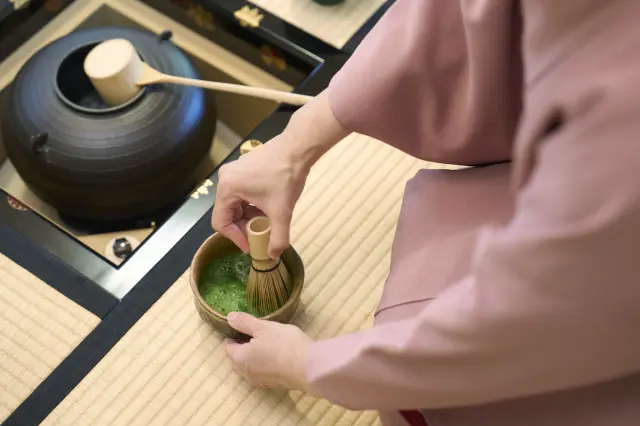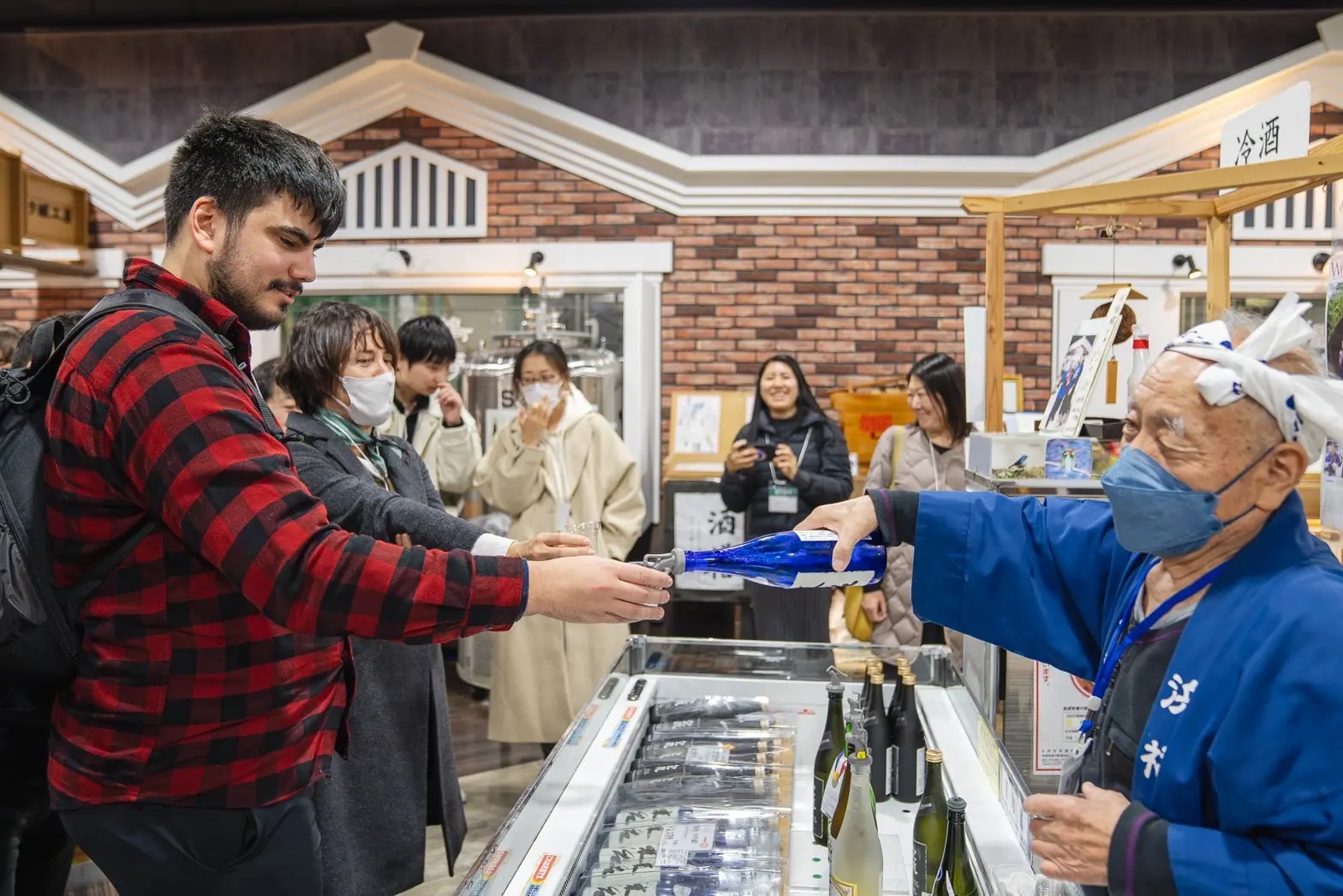
Hyogo: A Journey in Search of Japan’s Finest Sake
Last update
Hyogo is home to several renowned sake regions, most notably Nadagogo, Japan’s most famous sake district. This two-day journey explores Itami, where refined sake brewing began; Nadagogo, a historical sake hub; and Harima, the birthplace of Yamada Nishiki sake rice. Along the way, you’ll see, learn, taste, and experience Hyogo’s deep sake culture.
Table of Contents
DAY1
9:20 – Depart from JR Osaka Station
Board the JR Takarazuka Line at JR Osaka Station and arrive at Itami Station in approximately 15 minutes. From the station, take a stroll westward along Itami Sake Brewery Street.
9:40 – Exploring Itami Sake Brewery Street, the Birthplace of Refined Sake
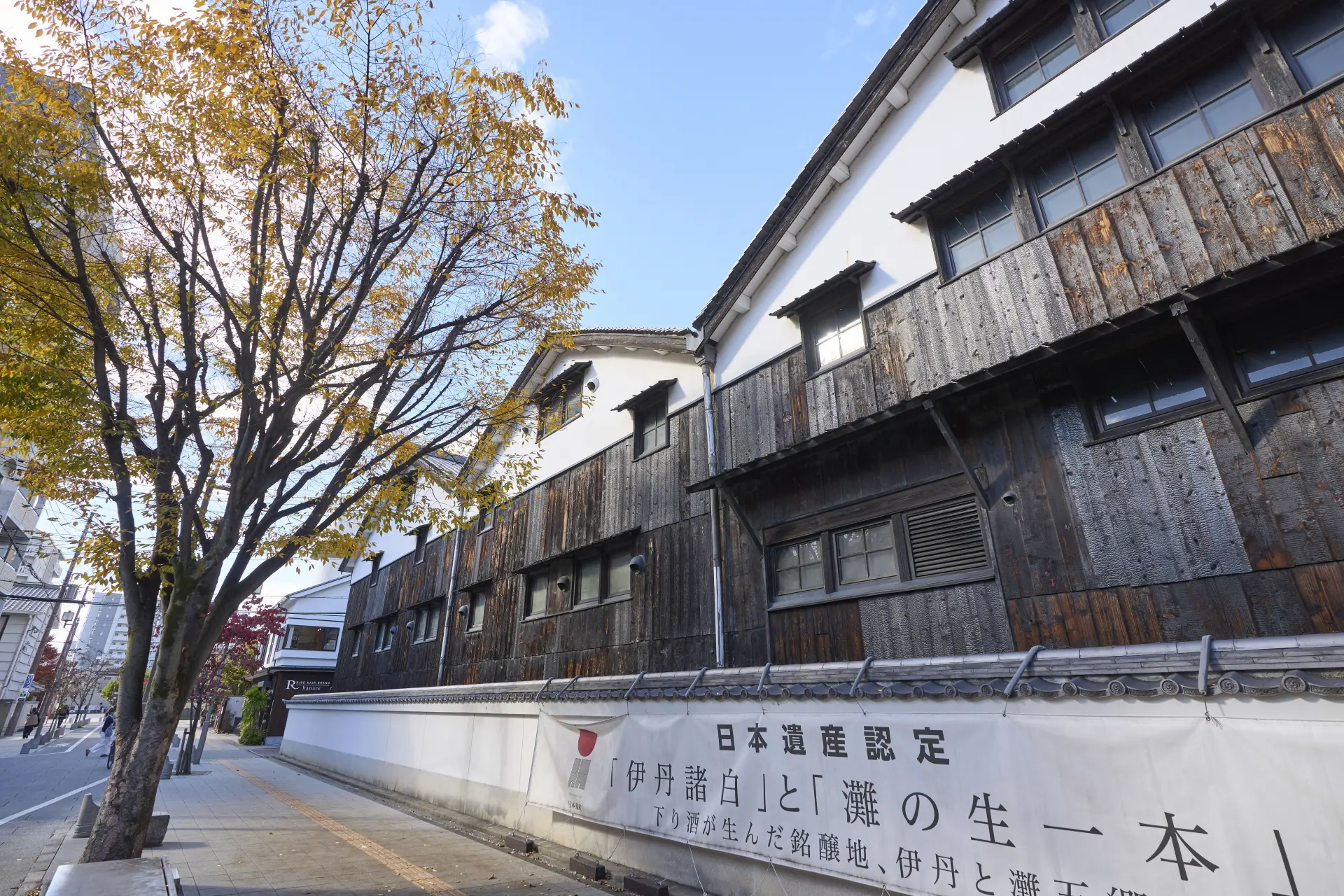
Two sake breweries, along with machiya-style restaurants and shops, line Itami Sake Brewery Street.
The journey in search of fine sake begins in Itami.
The street is lined with white-walled, tile-roofed buildings blending traditional and modern machiya styles, evoking a historical charm. A signboard along the street reads "Itami Sake Brewery Street." Itami is renowned as the place where sake brewing was perfected and subsequently spread nationwide, including to Edo (Tokyo). While many regions in Japan are known for sake production, Itami is said to be where authentic sake brewing first began.
Wandering west along the street, you will soon come across a striking, traditional storehouse-style building. This is the former sake brewery of Konishi Brewing, the producer of Itami’s representative sake brand, Shirayuki. The building stands out with its gabled roof, white walls, and black wooden fencing, making it an irresistible spot for photography.
Basic Information
- Name in Japanese
- 伊丹酒蔵通り
- Address
- 1 & 2 Chome, Chuo 3 Chome area, Itami City, Hyogo 664-0851
- Access
- Short walk from JR Takarazuka Line “Itami” Station
- Hours
- Open for free exploration
- Admission
- Free
10:00 – Visiting the Former Okada Residence and Sake Brewery
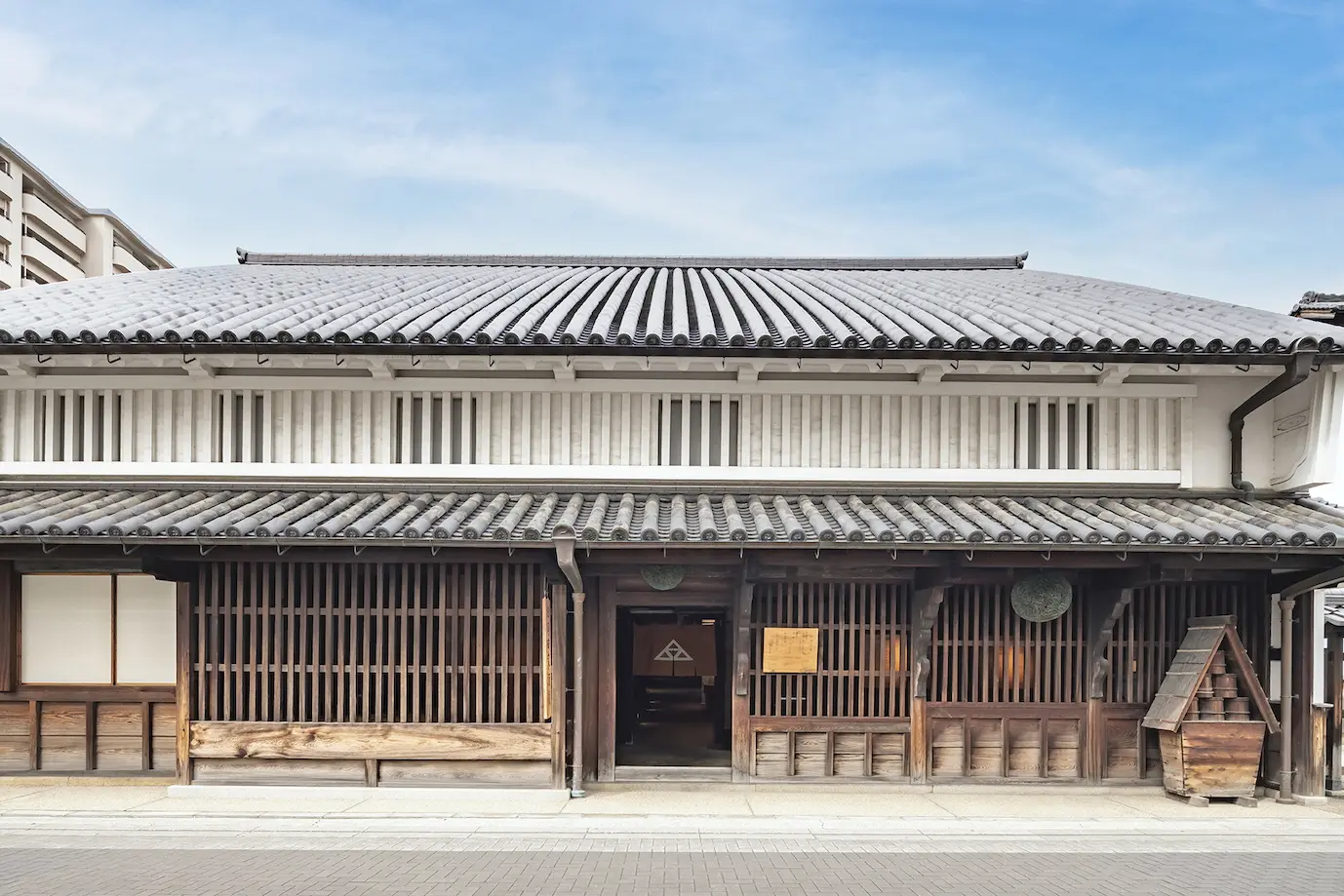
Edo-period machiya architecture preserving the town’s former prosperity from sake brewing
Turn north at the intersection near Itami Oimatsu Brewing, then take the first left. A short walk will bring you to an old machiya-style building on your left. This is the Former Okada Residence and Sake Brewery, one of the oldest machiya houses in Itami and one of the few remaining 17th-century machiya residences in Japan. It has been designated as an Important Cultural Property of Japan.
Located in the heart of Itami, the birthplace of refined sake, this structure was built in 1674 and served as a sake brewery for over 300 years until 1984.
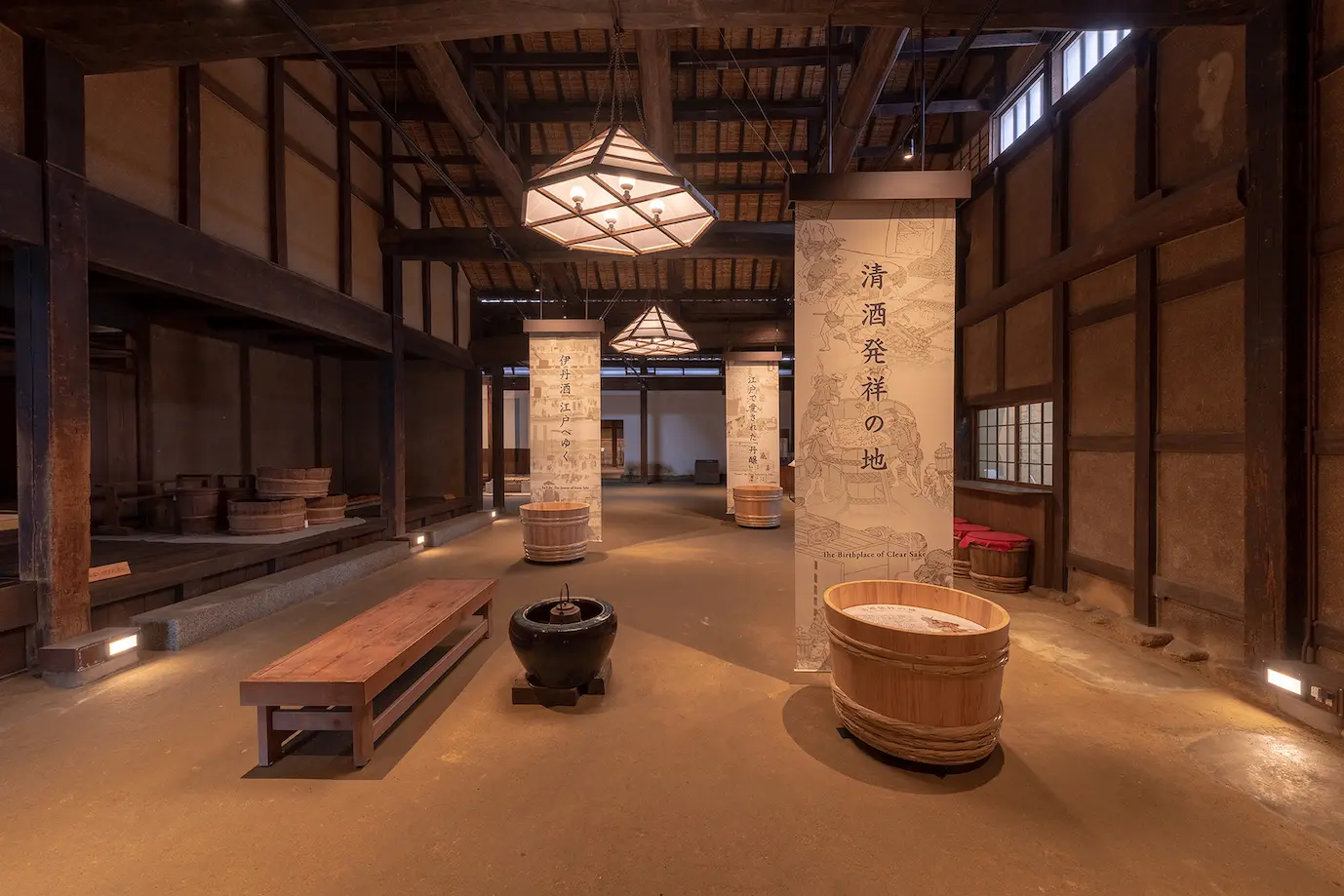
The interior is open to the public and can be toured for free.
Stepping inside through an entrance adorned with a sugidama (cedar ball), you will find a spacious dirt floor, thick wooden pillars and beams, and earthen walls that retain the atmosphere of the past. The ambiance evokes a sense of the presence of the brewers who once worked here. Even though sake brewing is no longer conducted on-site, the experience of standing in a historically significant brewing facility makes the visit truly valuable.
Basic Information
- Name in Japanese
- 旧岡田家住宅・酒蔵
- Address
- 2-5-20 Miyano-mae, Itami City, Hyogo 664-0895
- Phone
- 072-772-5959 (Itami City Museum)
- Access
- 6-minute walk from JR Takarazuka Line “Itami” Station
- Hours
- 10:00–18:00 (last entry at 17:30)
- Admission
- Free
- Closed
- Mondays (or the following weekday if Monday is a holiday), New Year’s holidays
- URL
- URL
12:00 – Join a Sake Tasting Tour at Kobe’s Breweries!
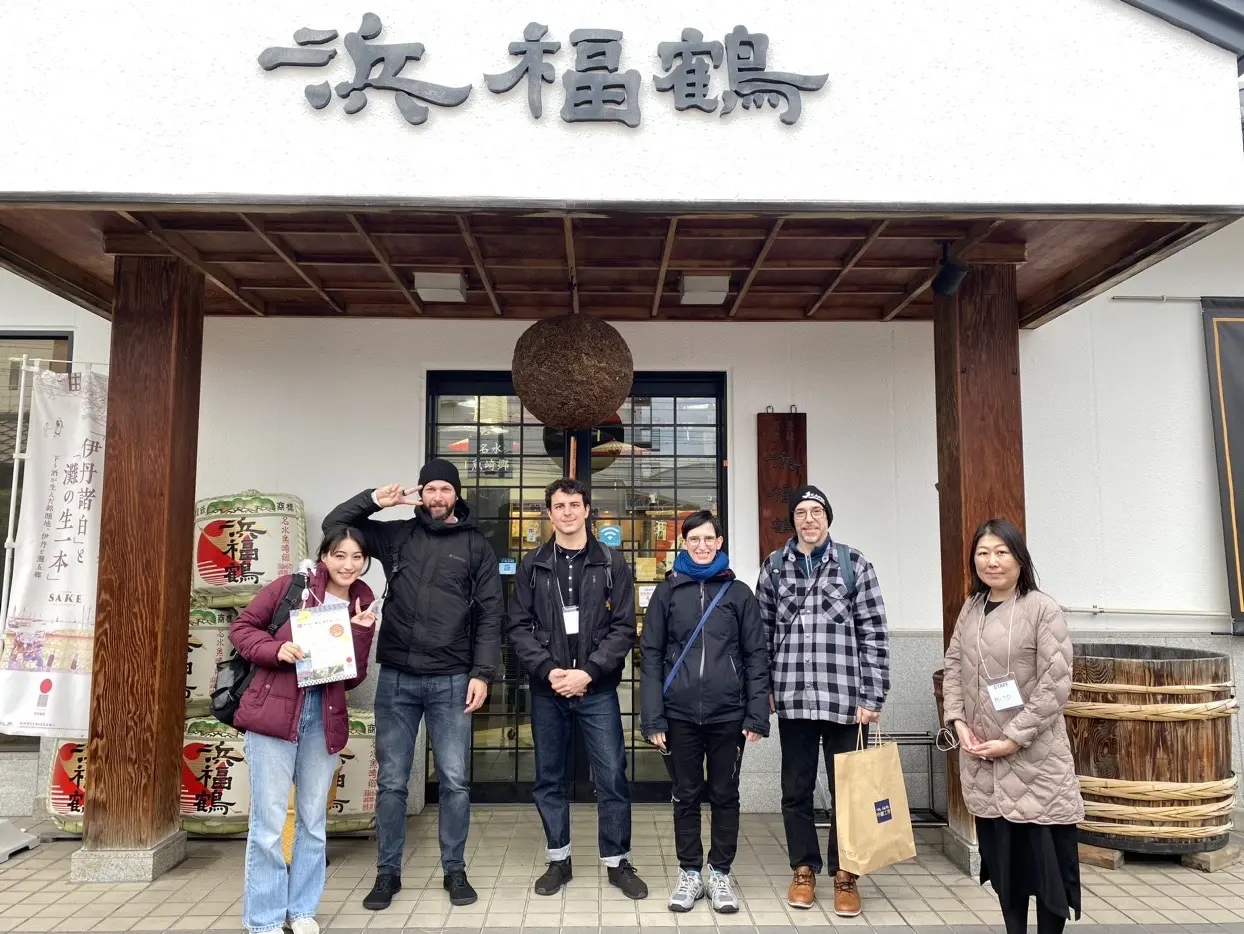
A guided sake experience tour exploring Nada’s breweries
Leaving Itami, the birthplace of refined sake, take the JR and Hanshin lines to Kobe, heading towards Nadagogo, one of Japan’s premier sake-producing regions. Nadagogo spans five districts across Nishinomiya and Kobe: Imazu-Go and Nishinomiya-Go in Nishinomiya City, and Uozaki-Go, Mikage-Go, and Nishi-Go in Kobe. With 25 breweries scattered throughout, this area is a true sake powerhouse.
The first stop is the HAKUTSURU Sake Brewery Museum in Mikage-Go, the largest sake brewery in Japan. Inside this former brewery, visitors follow a guided path showcasing old brewing tools, life-size brewer mannequins, and informative videos, making the brewing process easy to understand. The tour concludes with free tastings of signature sake at the brewery’s shop, with premium options available for connoisseurs.
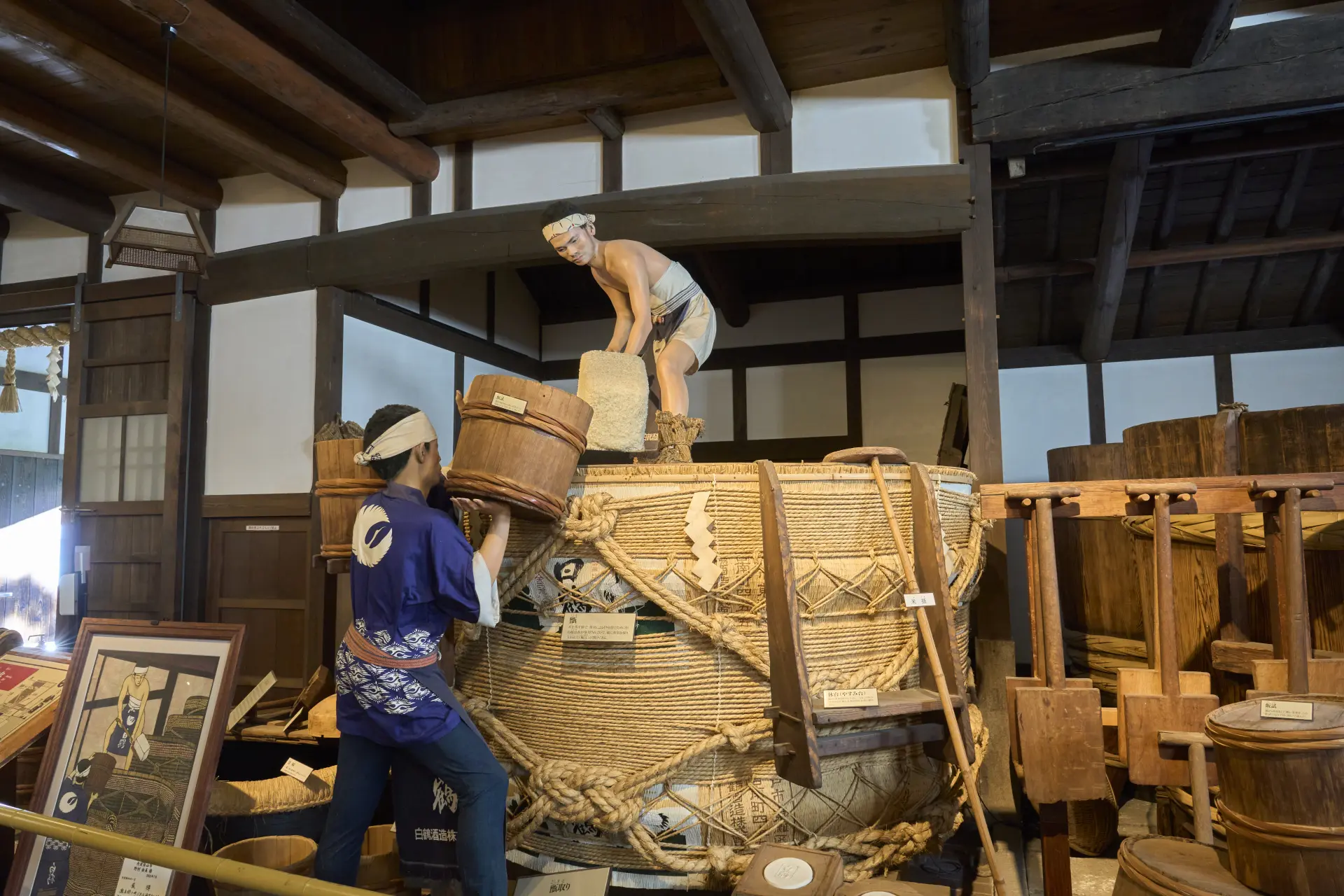
An exhibition using old tools and dolls to illustrate traditional sake brewing.
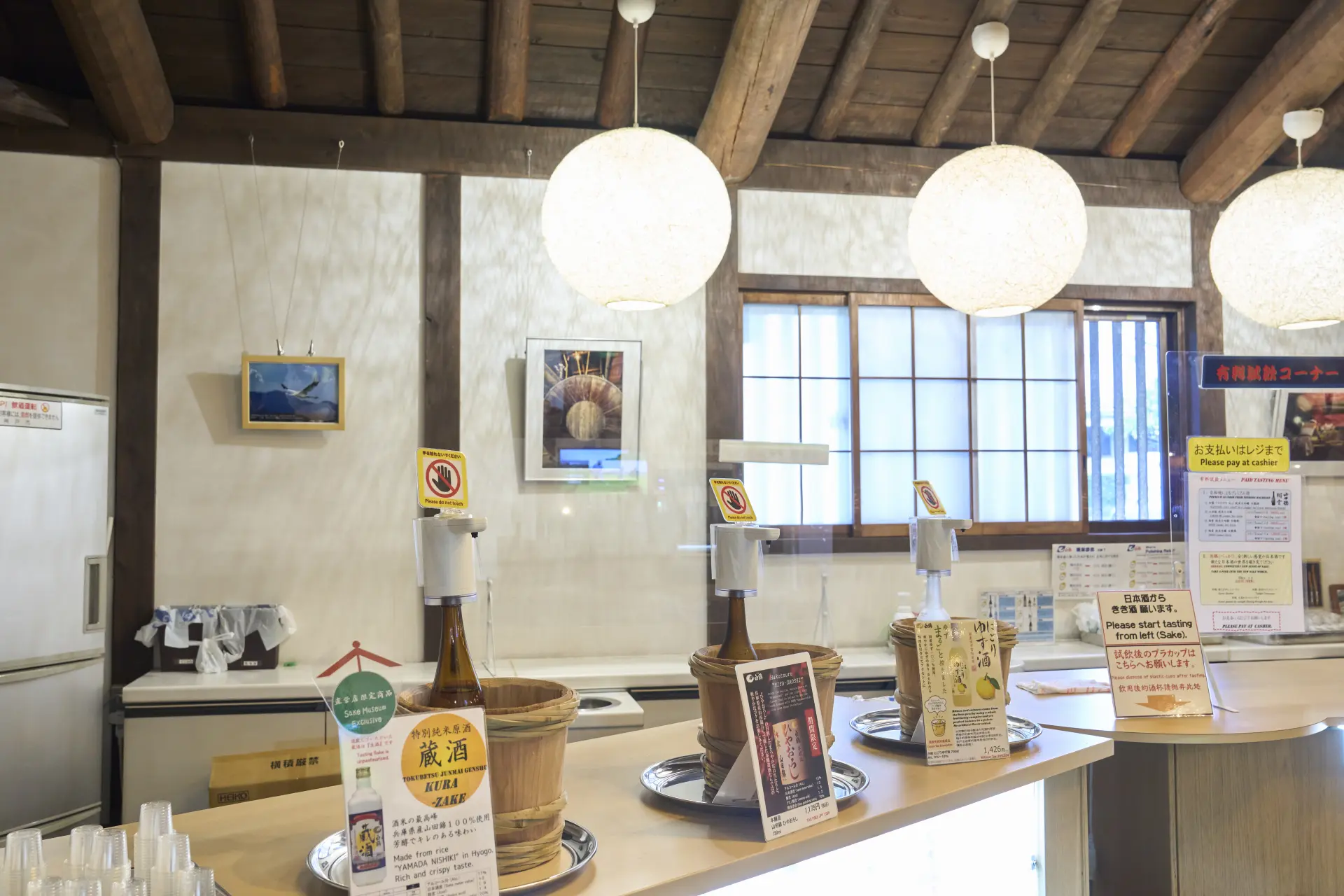
A tasting corner offering comparisons of several different types of sake.
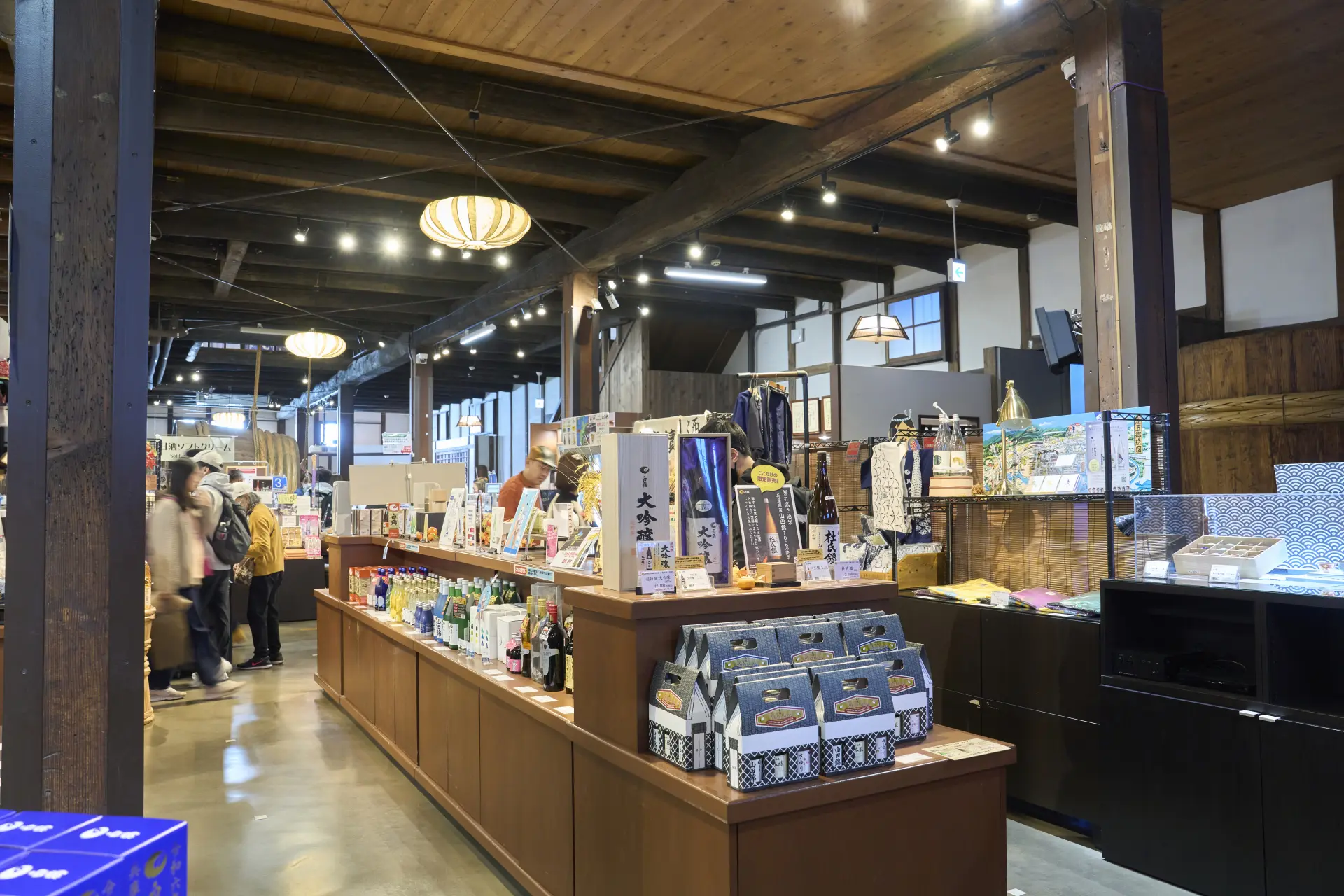
The shop features a wide variety of souvenirs, from sake to specialty goods.
Also in Mikage-Go, the Kiku-Masamune Sake Brewery Museum is the only facility showcasing “Nada’s Sake Brewing Tools,” designated as a National Important Tangible Folk Cultural Property. The museum primarily focuses on the Kimoto-zukuri brewing method, a traditional technique used for centuries. After learning about Nada’s brewing history, visitors can enjoy seasonal sake tastings for free or opt for premium paid tastings, with select sake available for purchase as souvenirs.
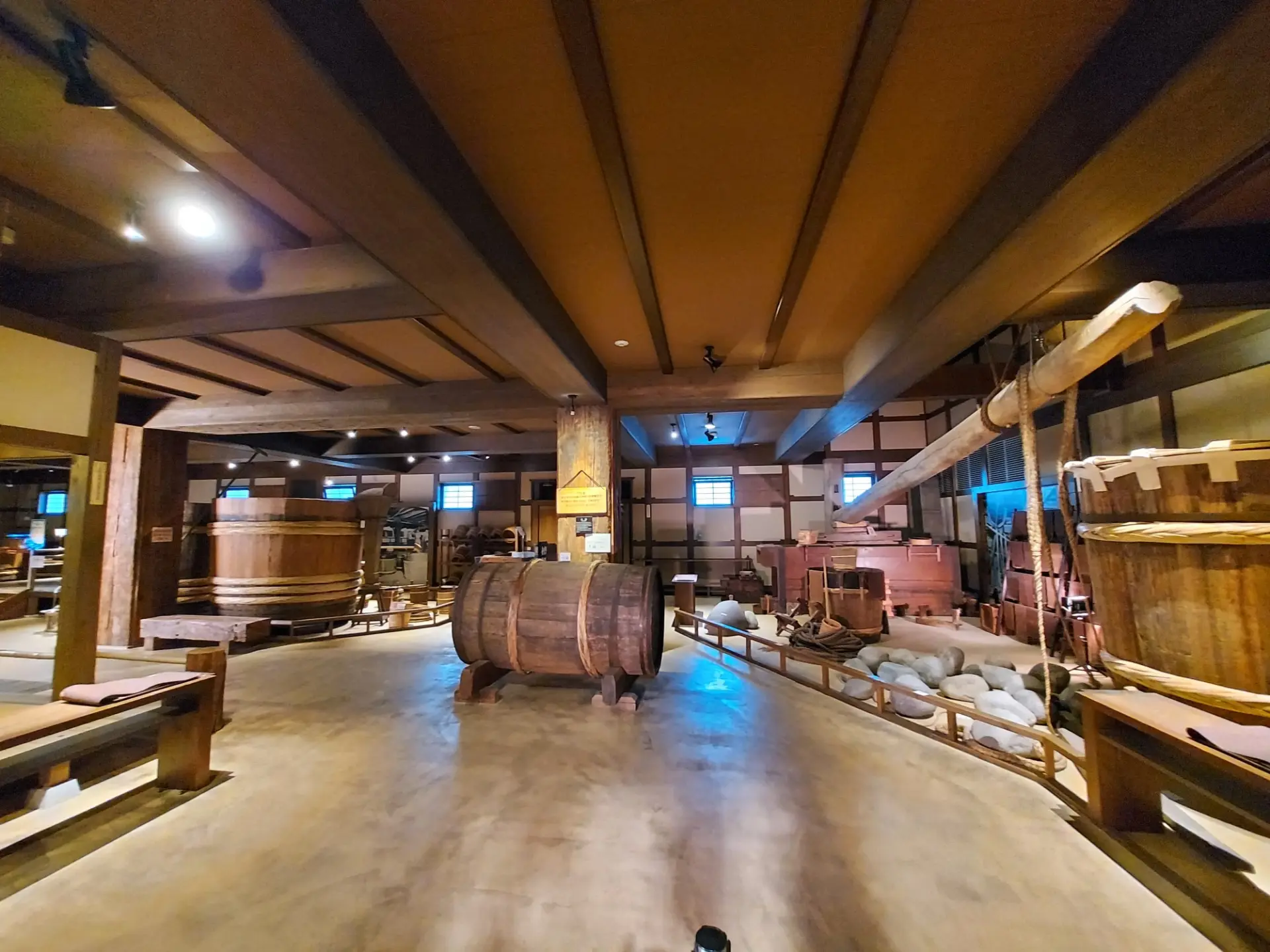
Almost all the old sake brewing tools on display are designated as Important Tangible Folk Cultural Properties of Japan.
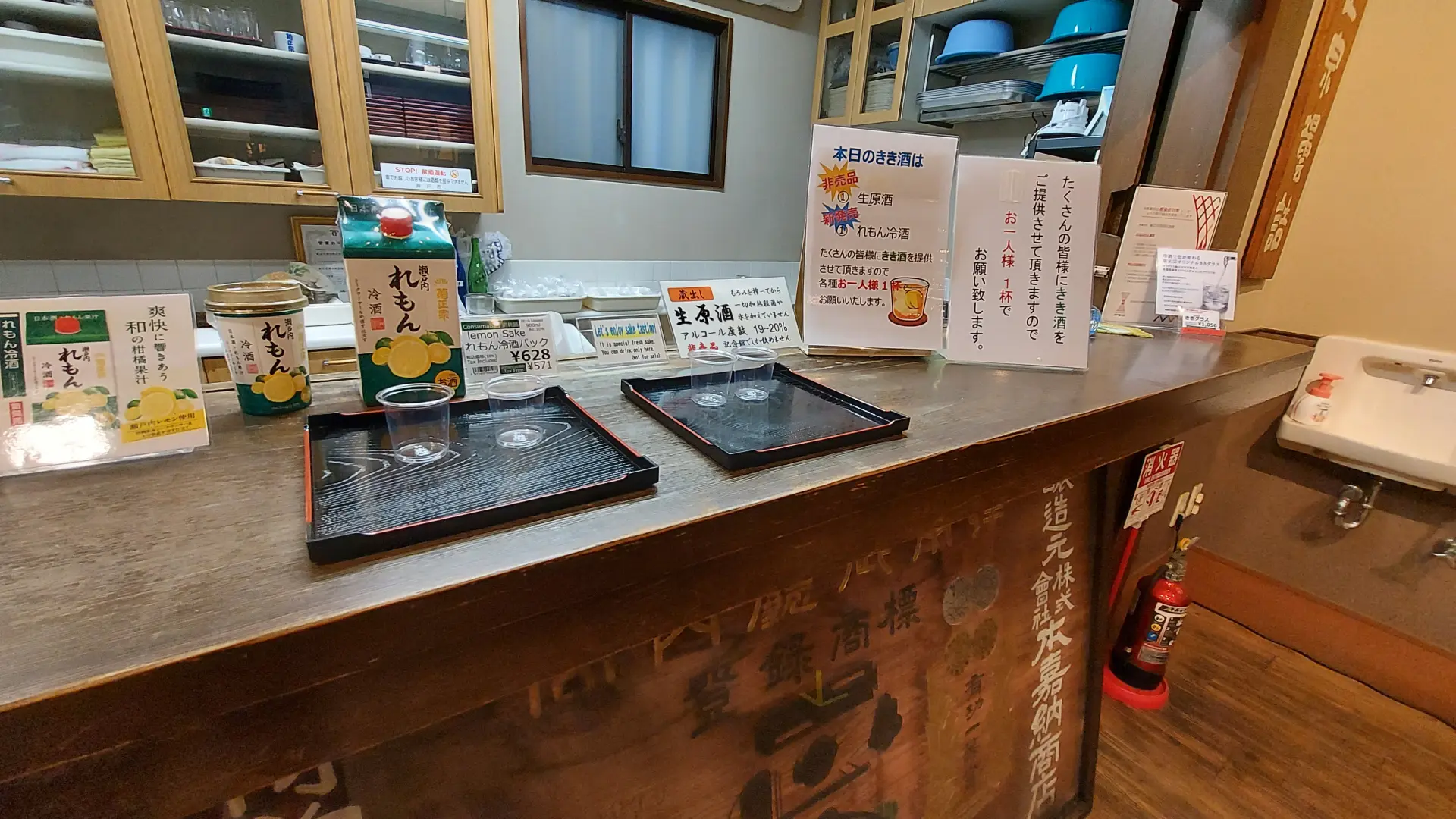
A selection of recommended seasonal and daily sake is available for free tasting.
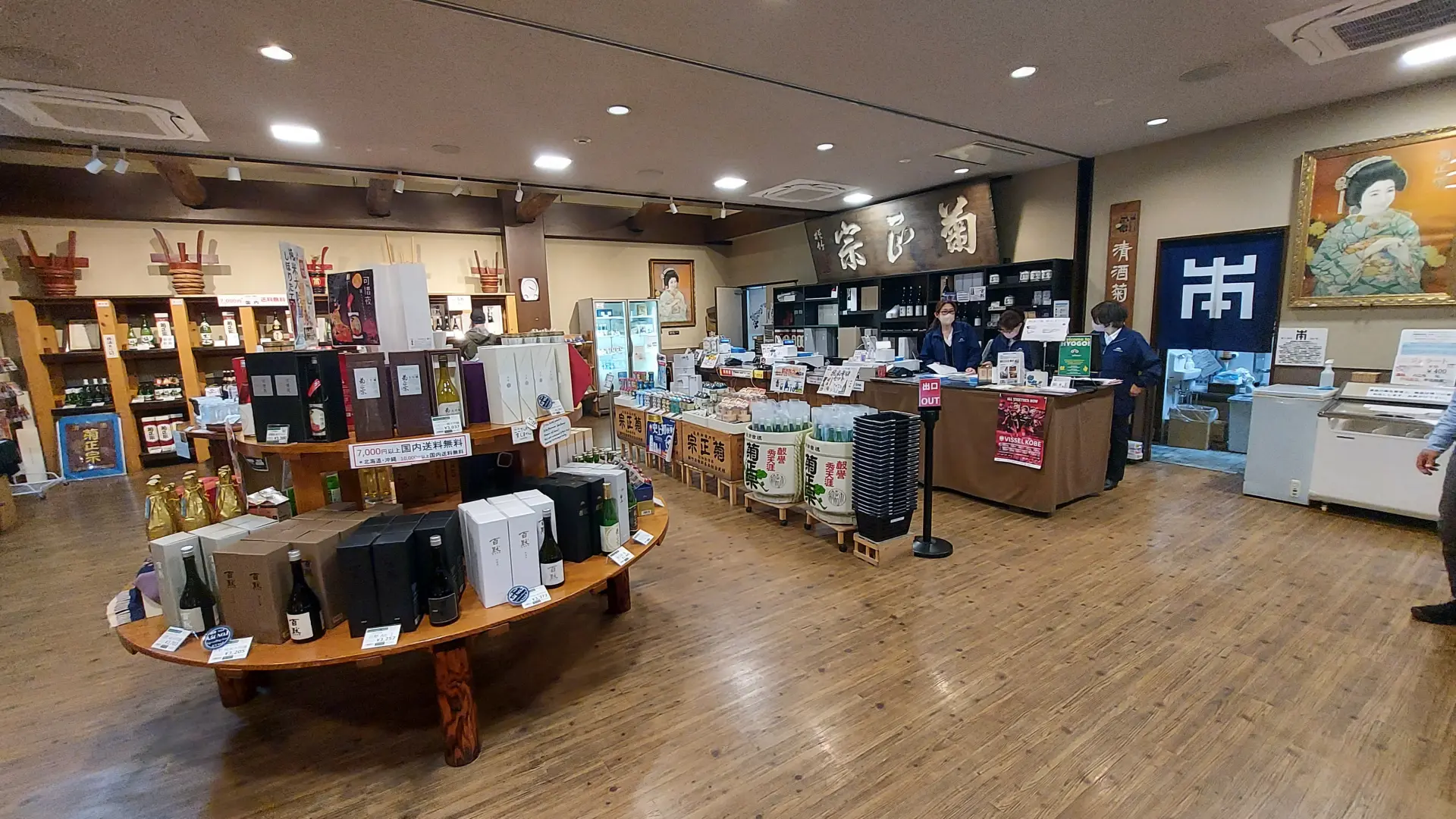
The shop offers a wide variety of products, from standard sake to exclusive limited-edition items.
At the Hamafukutsuru Ginjo Kobo in neighboring Uozaki-Go, visitors can observe live sake brewing through glass panels. The brewery continues to produce sake using the Kimoto-zukuri method, allowing visitors to witness traditional brewing techniques up close. Following the tour, guests can sample freshly pressed unpasteurized sake at the Nama-zake Tasting Corner or enjoy a variety of carefully selected sake at the Tasting Bar at reasonable prices.
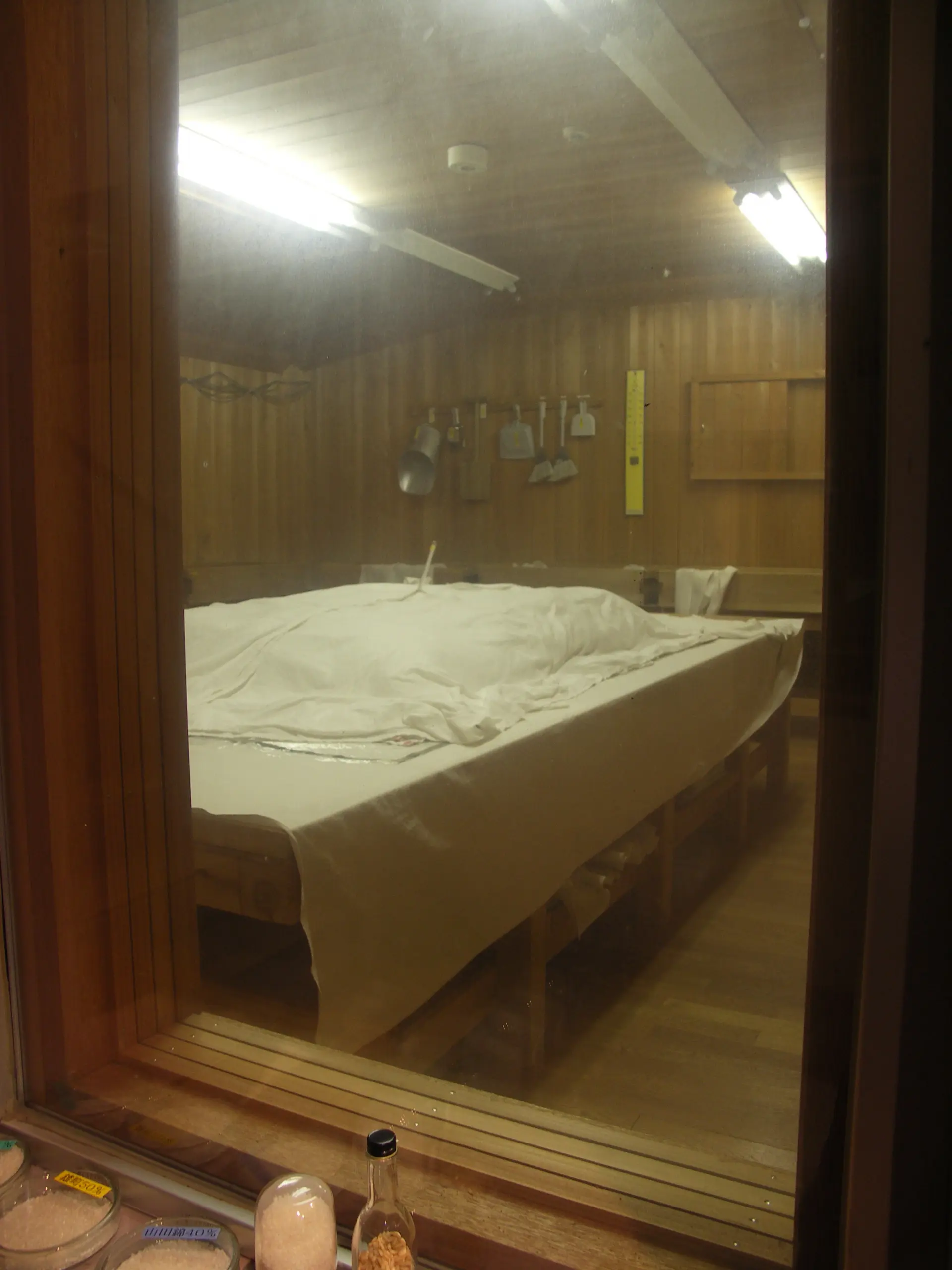
The sake brewing process can be observed through glass panels. The photo shows the koji room, where steamed rice is inoculated with koji mold.
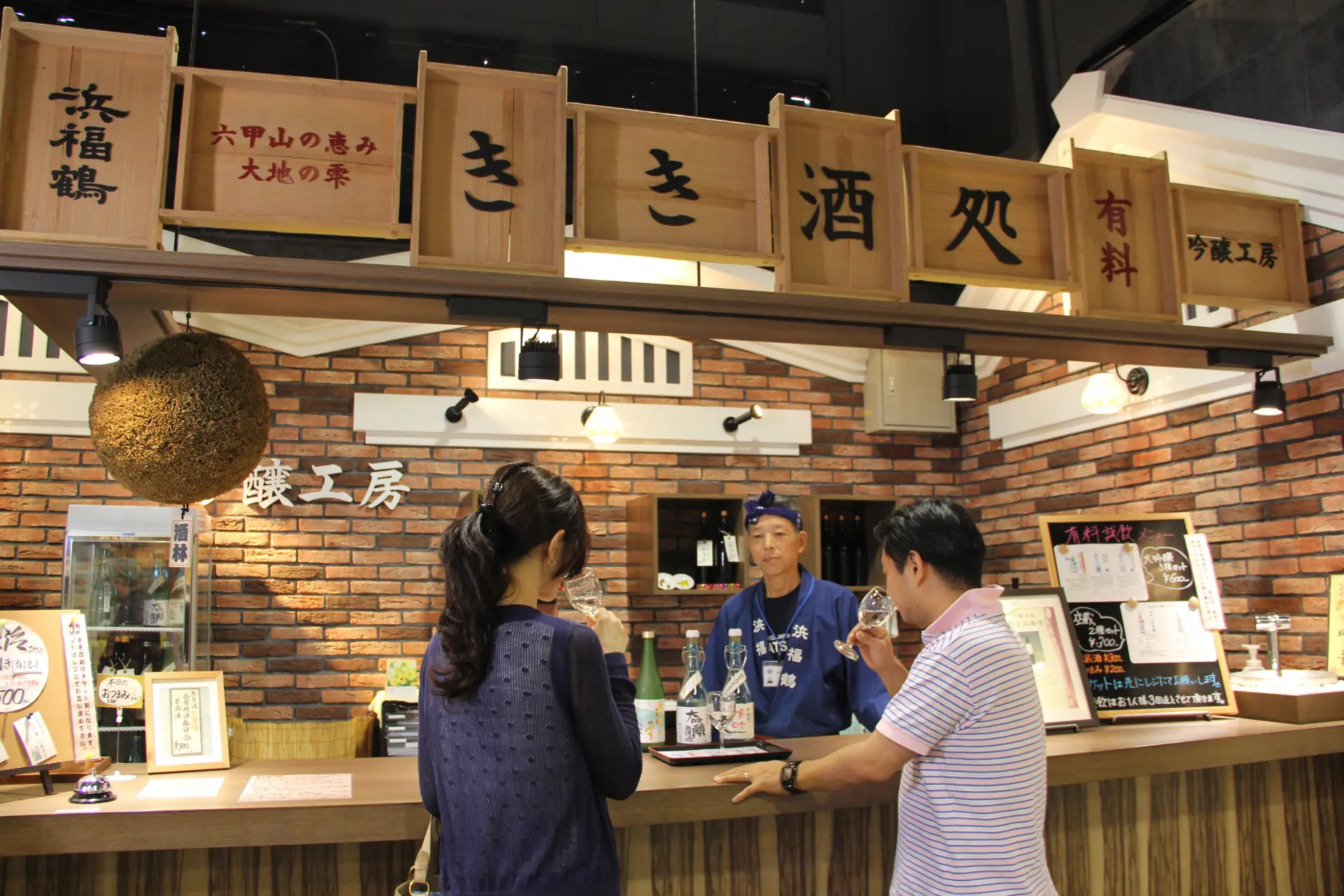
A paid tasting counter where visitors can sample select premium sake at reasonable prices.
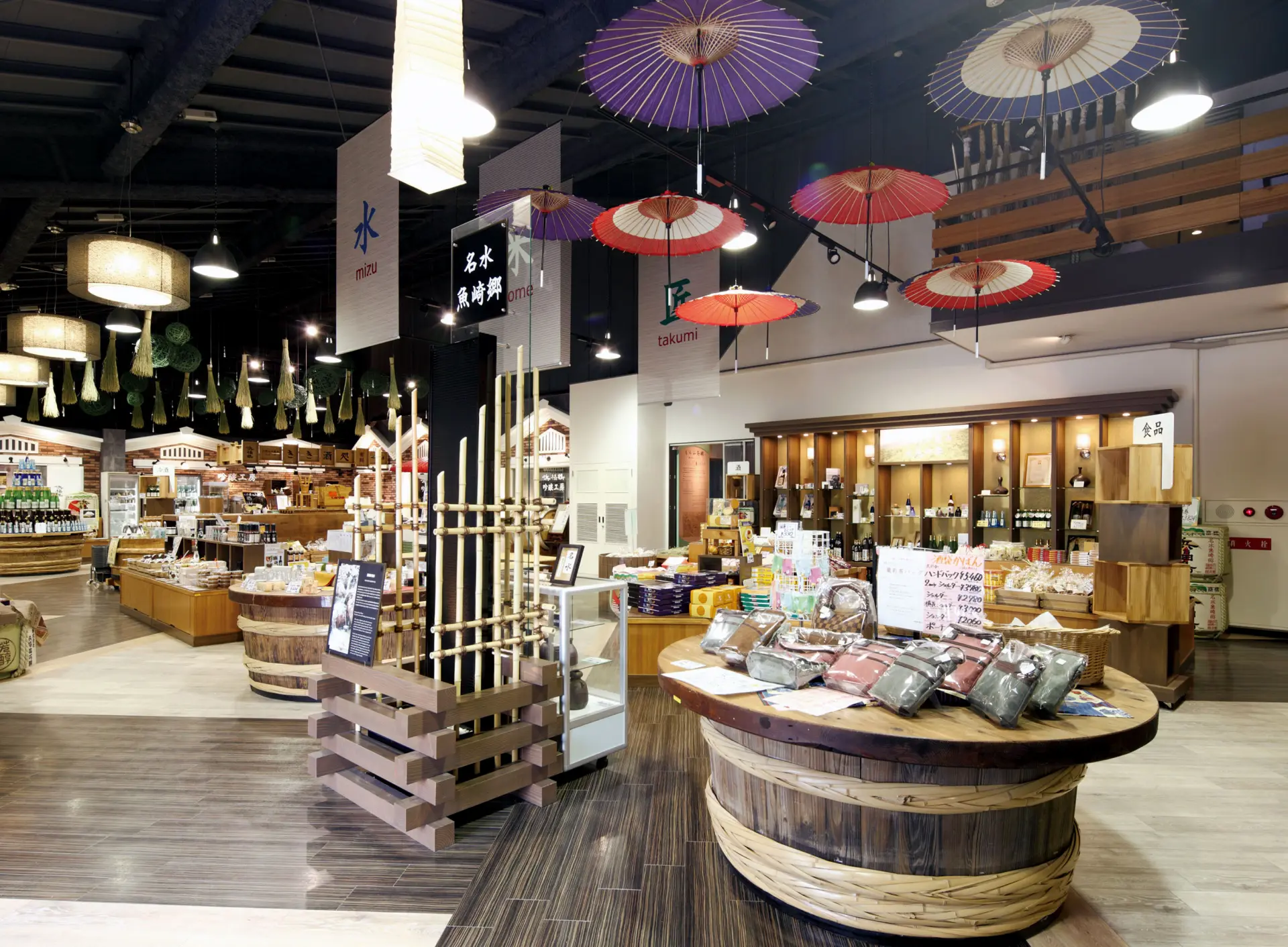
The direct sales corner features exclusive and original products not available elsewhere.
Basic Information
- Name in Japanese
- 神戸の酒蔵で日本酒のテイスティング体験
- URL
- URL
- Note
- The breweries introduced here are examples from the tour. The actual locations may vary depending on the season and circumstances.
17:00 – Stay at Yumenoi-an Yuyakekoyake, an Inn Offering Exquisite Sake and Cuisine
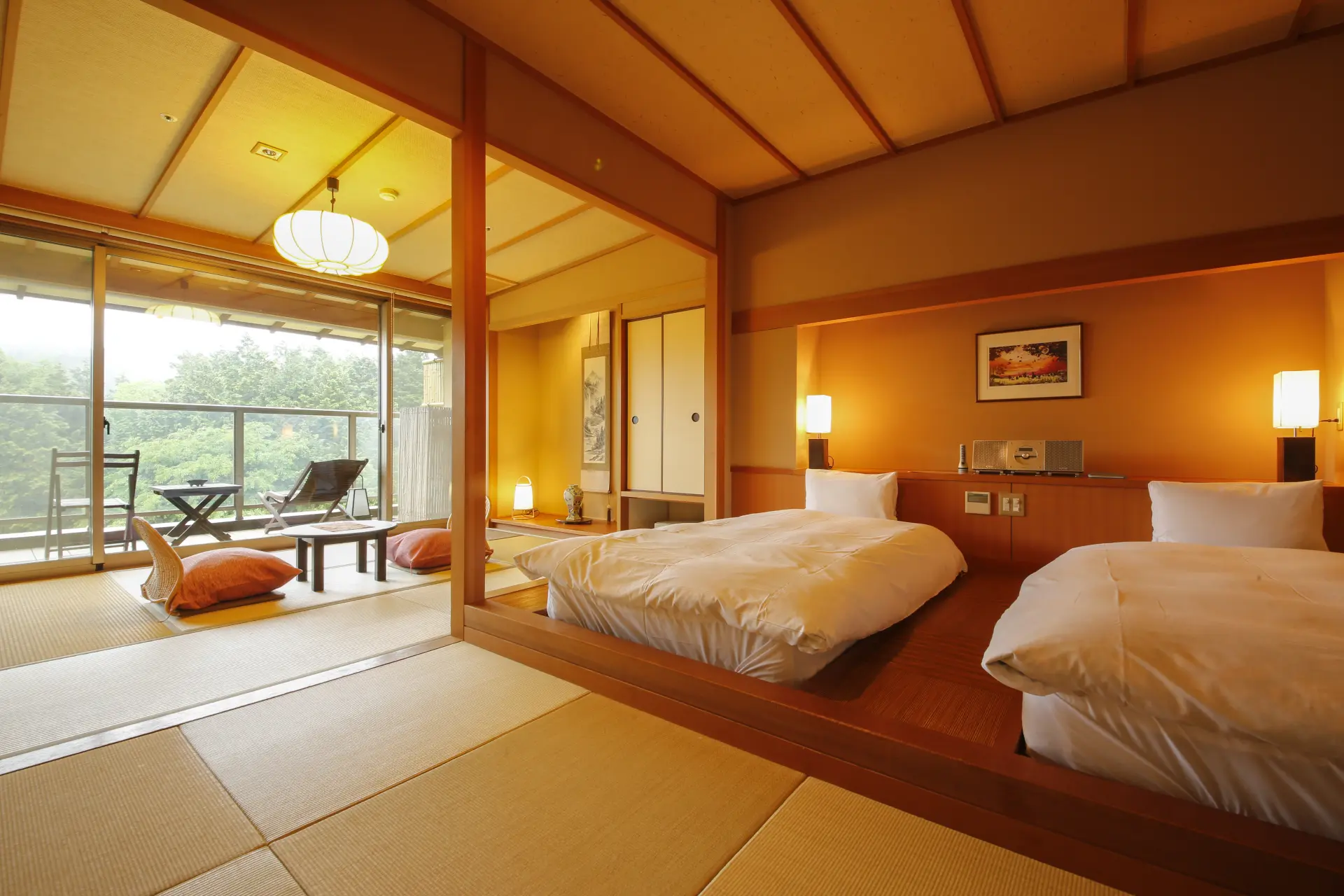
Rooms are designed in a Japanese-Western style, with tatami flooring and beds.
After indulging in Nada’s finest sake, travel to Himeji for the night’s accommodation. A two-hour journey via train and taxi brings you to Yumenoi-an Yuyakekoyake.
Nestled in the tranquil countryside of Harima Plain, surrounded by lush rice fields, the serene Yumesaki River, and the majestic Myojin-yama (nicknamed Harima Fuji), this inn provides an idyllic retreat for both body and mind.
Each of the 18 guest rooms combines modern design with traditional Japanese aesthetics and features a private open-air hot spring bath, allowing guests to soak in scenic views in complete relaxation.
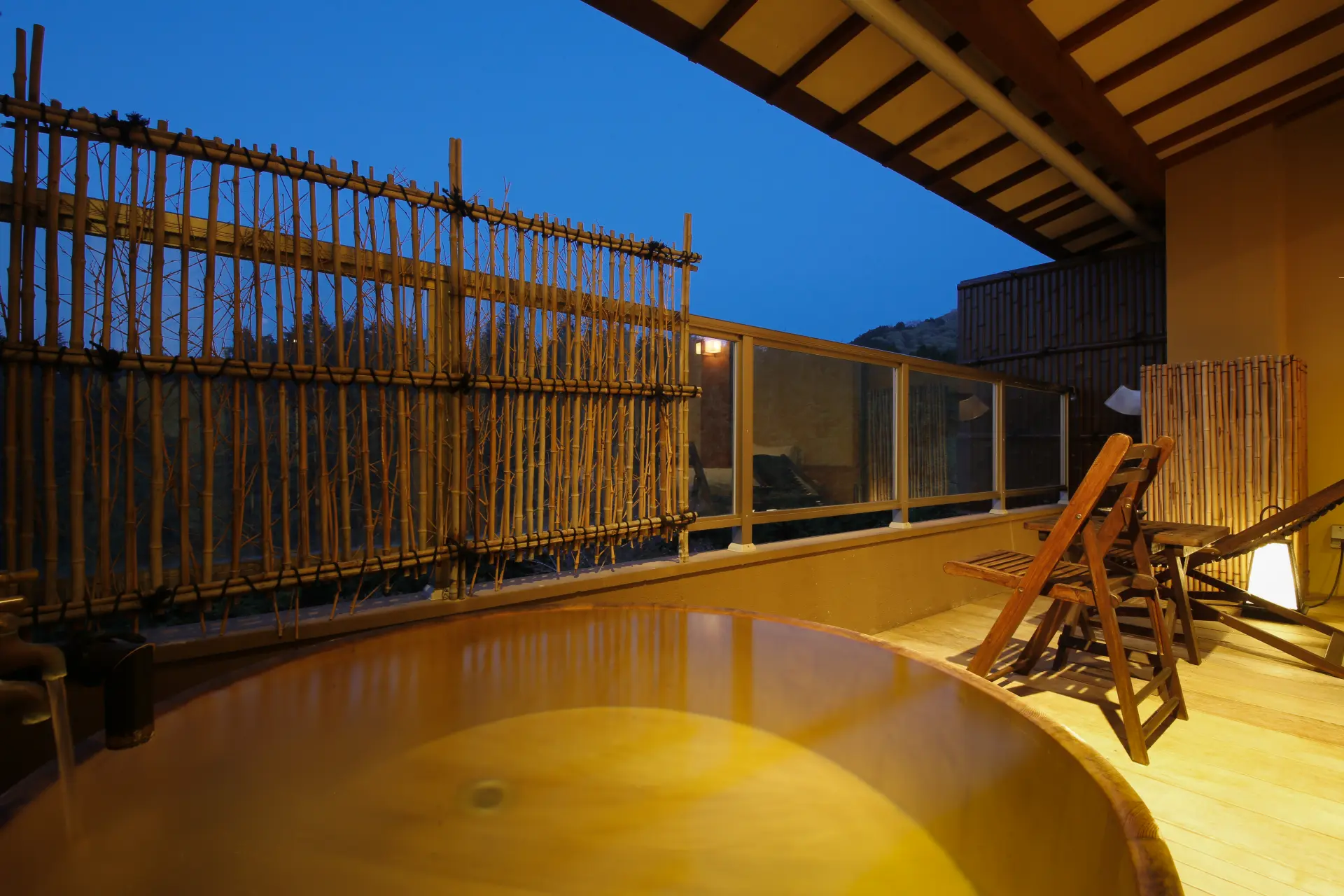
All rooms come with open-air baths, allowing for a luxurious soak at any time.
Dinner is a highlight of the stay, featuring meticulously prepared dishes made from the finest local mountain and seafood ingredients. Guests can also enjoy a special sake pairing experience, choosing three varieties from five representative sake brands of Harima, the birthplace of Yamada Nishiki, the king of sake rice. The pairing of fine sake with exquisite cuisine makes for an unforgettable dining experience.
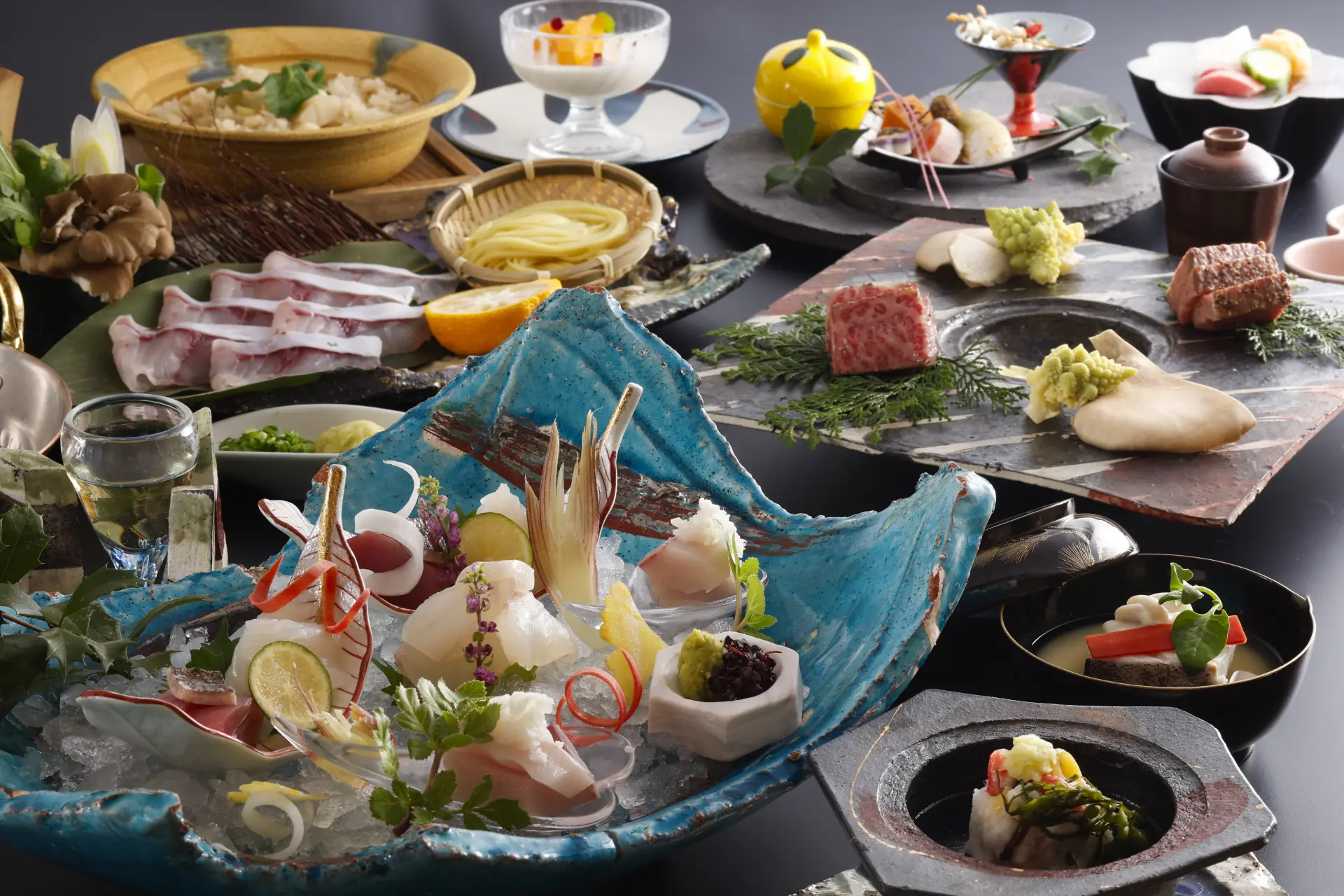
Dinner consists of a kaiseki course showcasing the seasonal bounty of Harima’s mountains and sea.
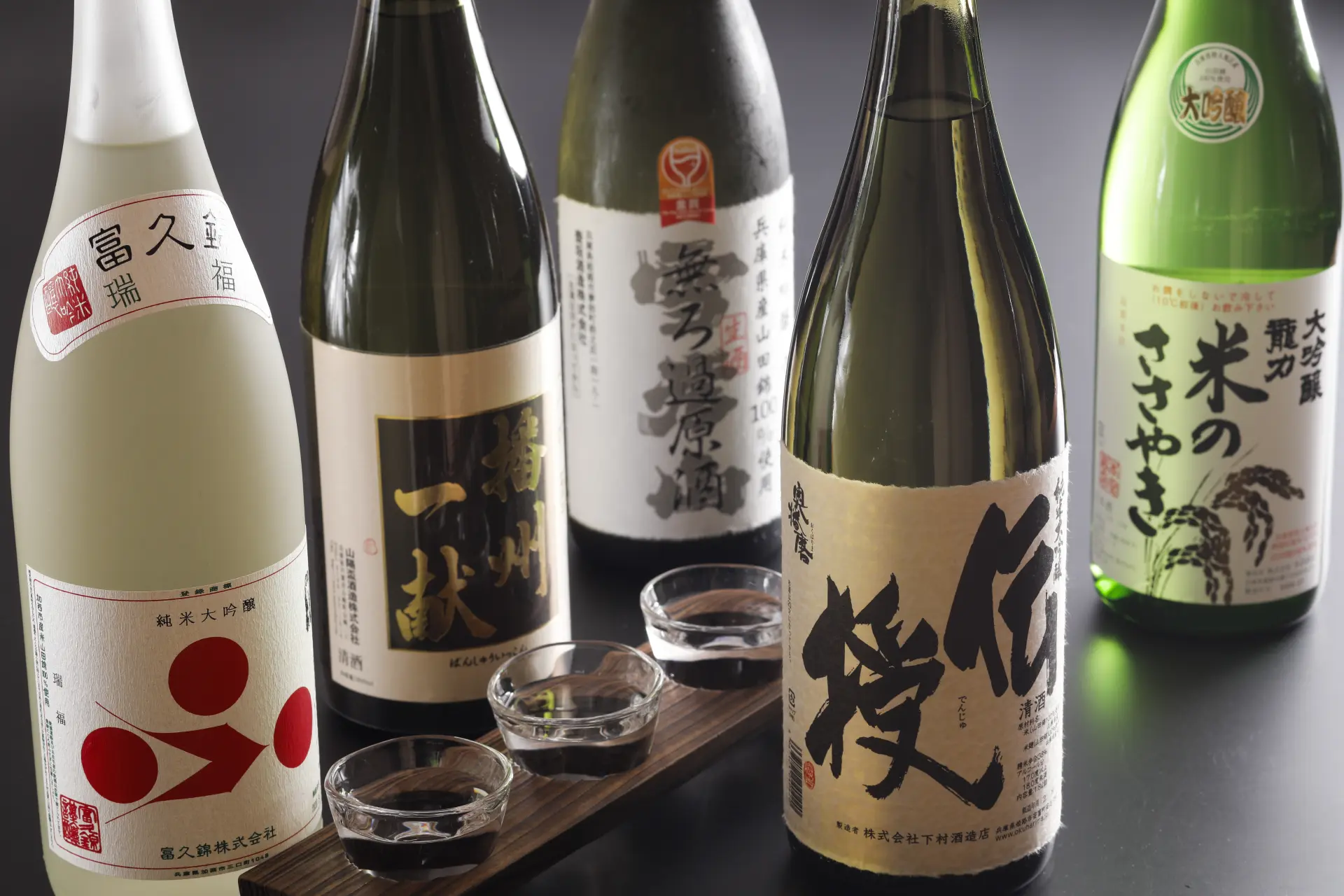
A tasting set featuring three selected local Harima sake.
Basic Information
- Name in Japanese
- 夢乃井庵 夕やけこやけ
- Address
- 187 Maenosho, Yumesaki-cho, Himeji City, Hyogo 671-2103
- Phone
- 079-336-1000
- Access
- 15-minute taxi ride or free shuttle bus (advance reservation required) from JR Bantan Line “Fukusaki” Station
- Check-in
- 15:00–18:00 / Check-out
- Rates
- From ¥30,800 per person (including two meals)
- URL
- URL
DAY2
9:50 – Breakfast and Checkout. Exploring Himeji, Akashi, and Harima
On the second day, the journey continues with a visit to the UNESCO World Heritage Site, Himeji Castle, followed by a stroll through the port town of Akashi.
11:00 – Himeji Castle: Japan’s First UNESCO World Heritage Site
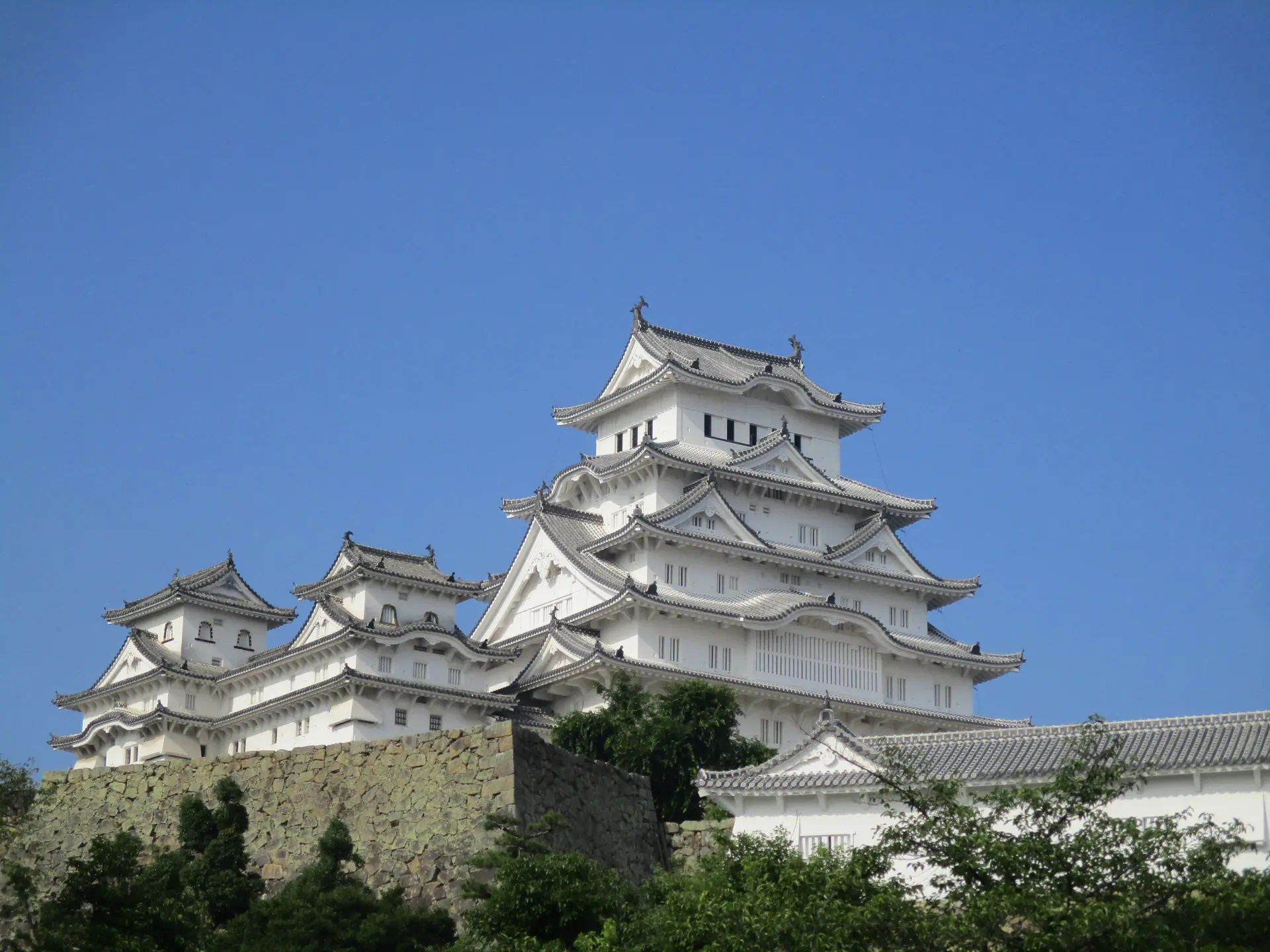
The brilliant white castle tower looks stunning from every angle, earning it the nickname "Happo Shomen" (beautiful from all sides).
After bidding farewell to the shuttle bus driver who kindly dropped us off at Fukusaki Station, we took the JR Bantan Line to Himeji Station.
Stepping out of the station, we spotted the majestic white form of Himeji Castle at the end of the road—the first site in Japan to be designated a UNESCO World Heritage Site. A 20-minute walk through shopping streets brought us to its gates. Up close, its brilliant white exterior stood out even more, making its nickname, “White Heron Castle,” feel truly fitting.
Excitement built as we reached the castle grounds. We passed through Sannomaru Square, purchased our admission tickets, and headed toward the main keep. However, the journey wasn’t straightforward. The winding paths, steep slopes, and stone steps made progress slow, revealing how the castle’s design effectively deterred enemy intrusions. Wearing comfortable clothing and shoes turned out to be the right choice.
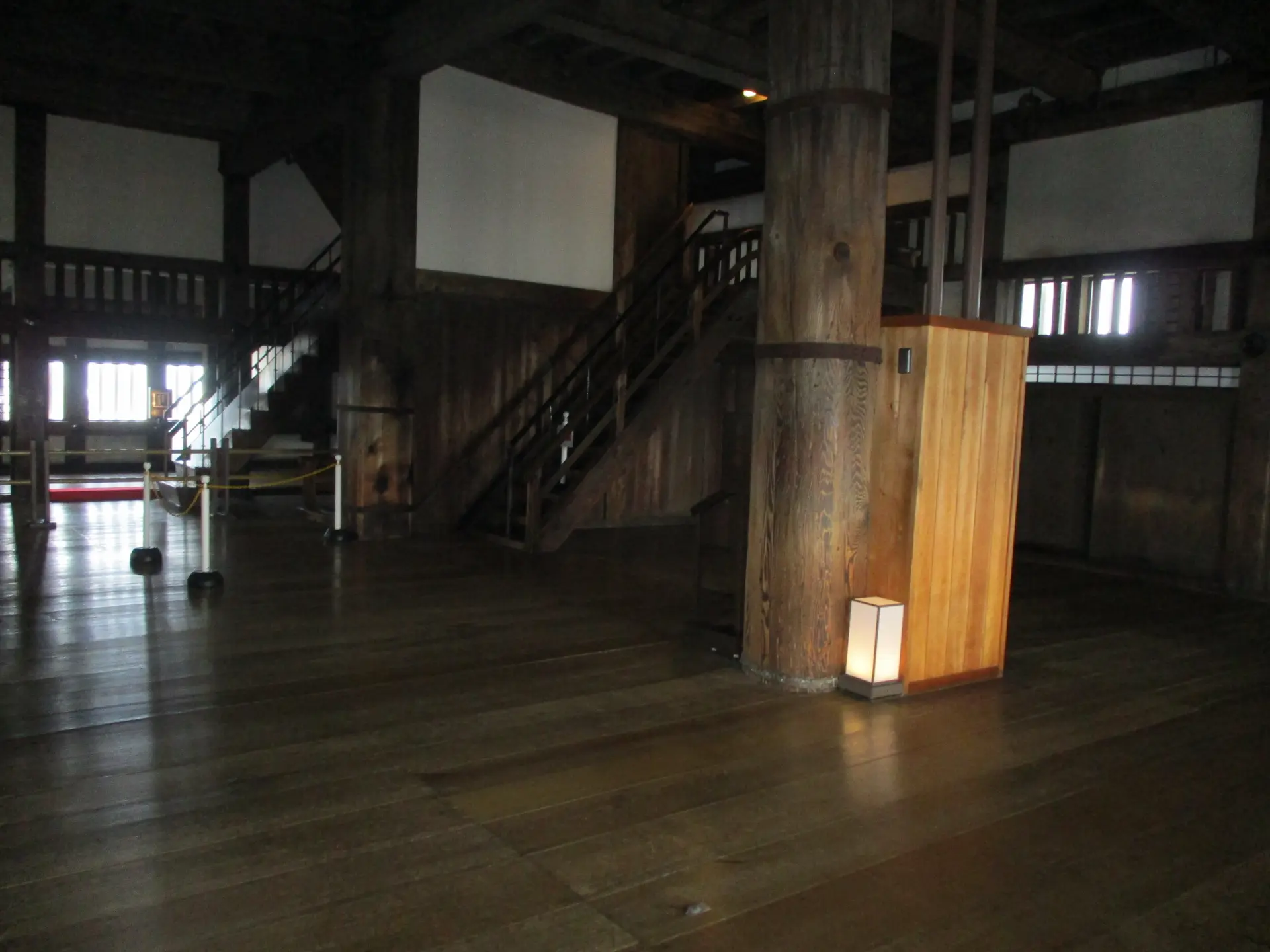
Inside the main keep, featuring defensive mechanisms, architectural tricks, and the finest examples of wooden castle construction.
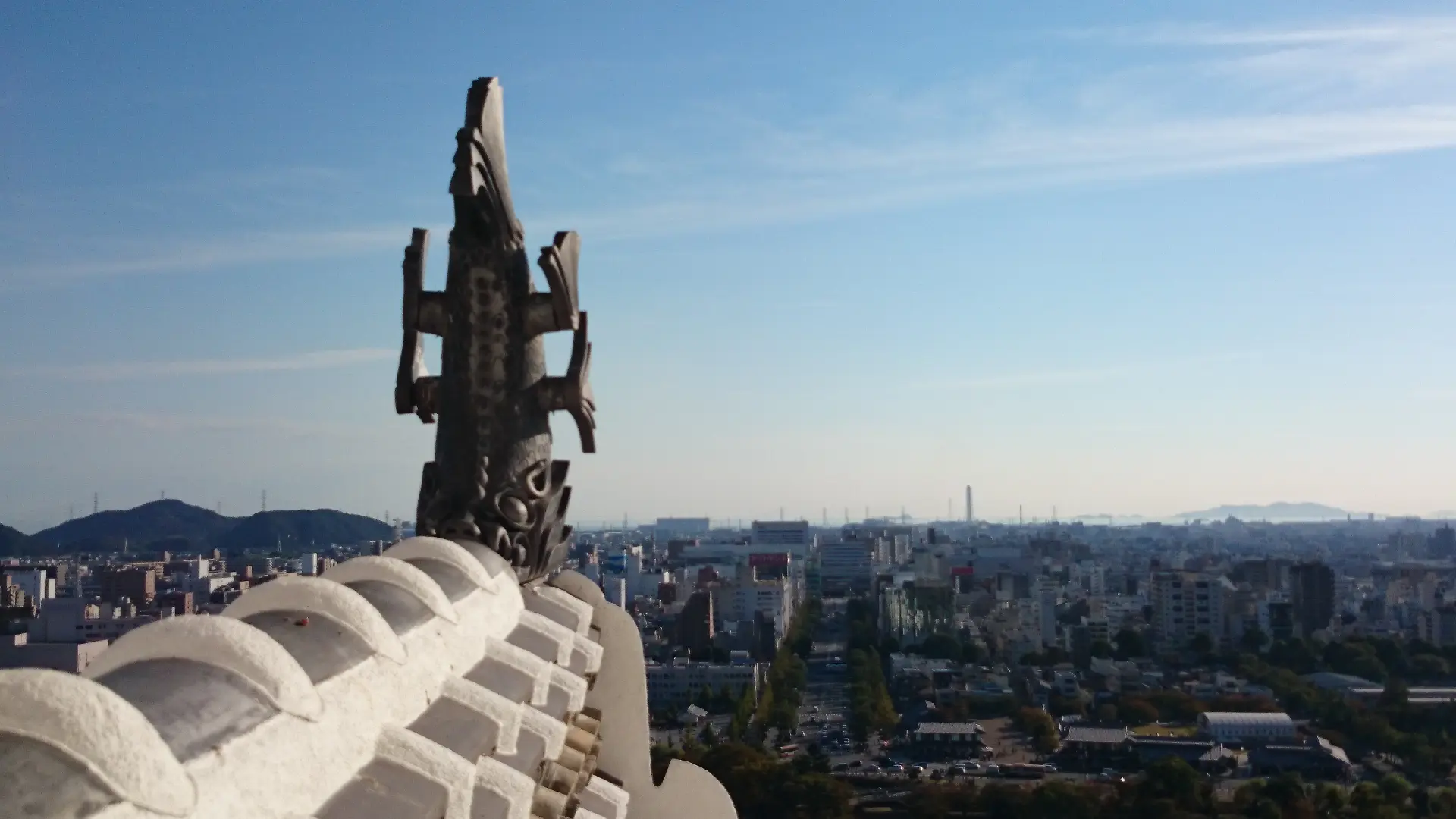
A panoramic view from the top floor of the main keep. Traditional plasterwork techniques on the roof tiles can also be seen up close.
Finally, we arrived at the entrance to the main keep and stepped inside. Since the interior requires visitors to remove their shoes, carrying a personal shoe bag made the process smoother. The castle’s interior features various defensive tricks and mechanisms designed to deceive invaders, making it a fascinating place to explore, even for those who aren’t particularly interested in history.
The highlight of the visit was the breathtaking view from the top floor. Gazing out over the castle grounds and the city of Himeji, we couldn’t help but feel a bit like the castle’s ruler for a moment.
Basic Information
- Name in Japanese
- 姫路城
- Address
- 68 Honmachi, Himeji City, Hyogo 670-0012
- Phone
- 079-285-1146 (Himeji Castle Management Office)
- Access
- 20-minute walk from JR/Sanyo Electric Railway "Himeji" Station
- Hours
- 9:00–17:00 (Last admission at 16:00) *Varies by season
- Admission
- Adults (18 and over) ¥1,000 / Children (Elementary to High School) ¥300 / Preschoolers Free
- Closed
- December 29–30
- URL
- URL
13:30 – Enjoying Akashi’s Culinary Delights with Sushi Coupons & Exploring Uonotana Shopping Street
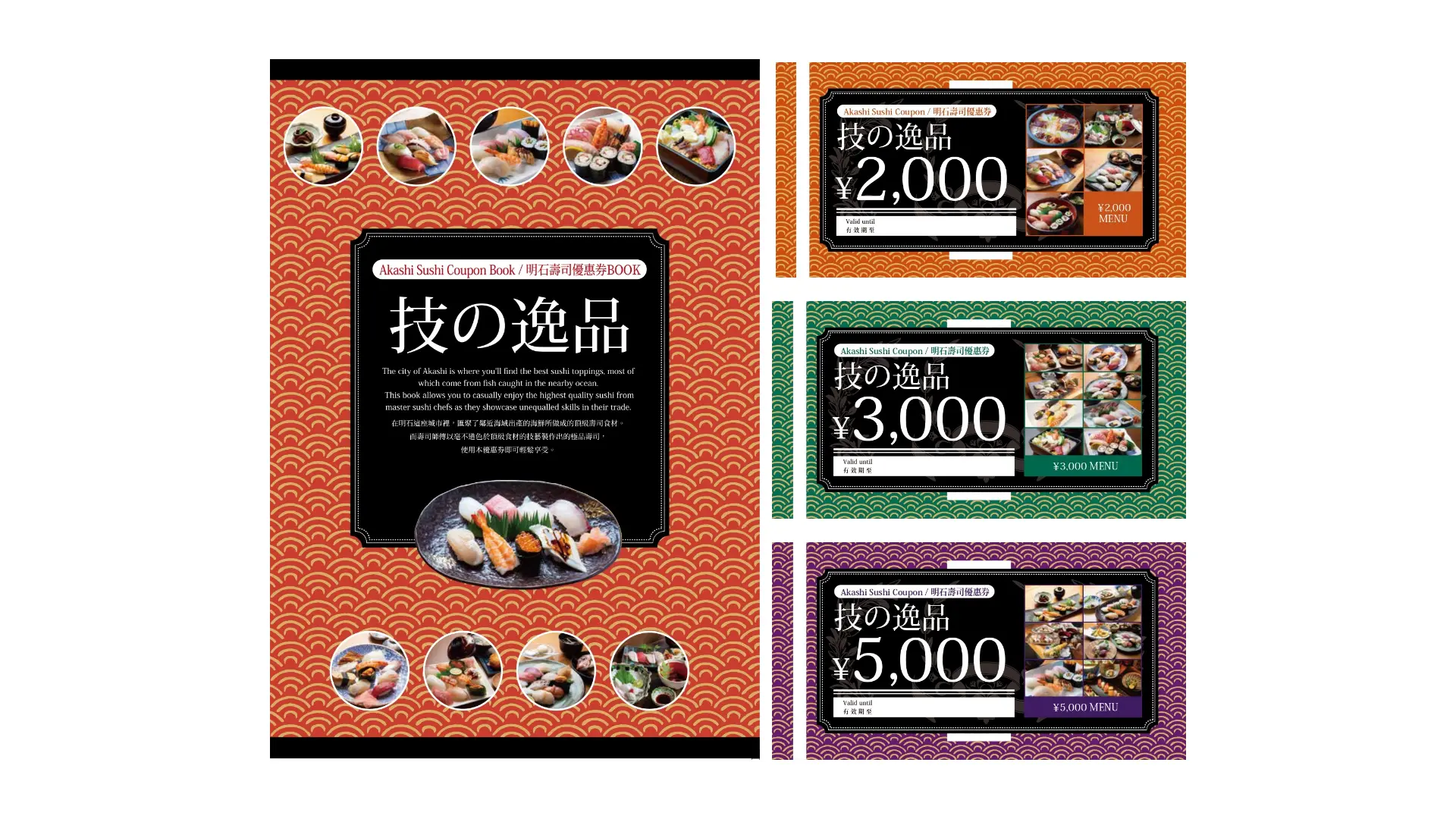
Sushi coupons are available in three price options: ¥2,000, ¥3,000, and ¥5,000
After fully appreciating the world-renowned castle, we headed to Akashi, a bustling port town famous for its fresh seafood. The journey from Himeji to Akashi took just over 20 minutes on the JR Special Rapid Service.
Upon arrival, we immediately set out for a sushi lunch. Akashi is known for its rich fishing grounds, yielding around 100 different types of fish throughout the year. With high-quality, fresh fish being a staple of daily life, the town has long been home to numerous sushi restaurants where skilled chefs refine their craft.
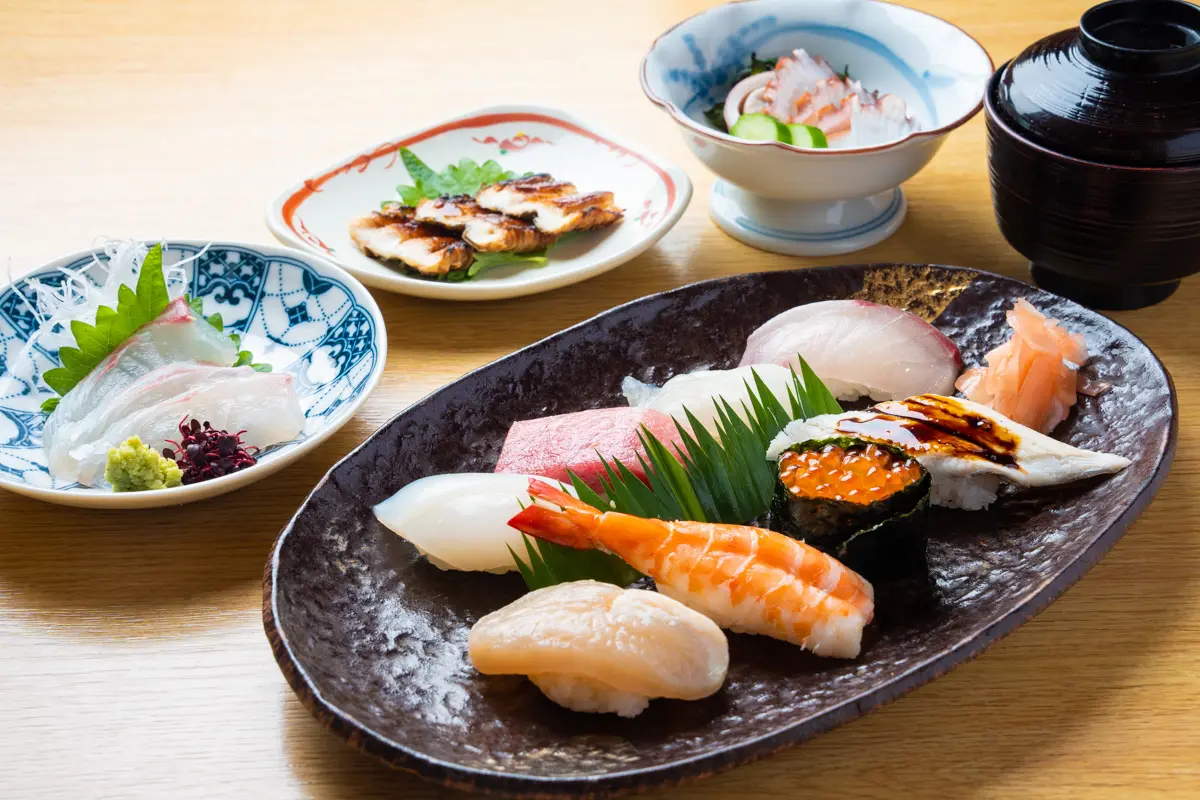
An example of a menu item available using the sushi coupon
We made the most of Akashi’s sushi scene with the "Akashi Sushi Coupon – Waza no Ippin," which allows diners to enjoy special menu items at ten participating restaurants near Akashi Station. After picking up a coupon from the tourist information center or online, we headed to a selected restaurant. The exquisite sushi, crafted from the finest ingredients with expert techniques, was visually stunning and tasted just as incredible. To complement the meal, we ordered sake, savoring each bite and sip with delight.
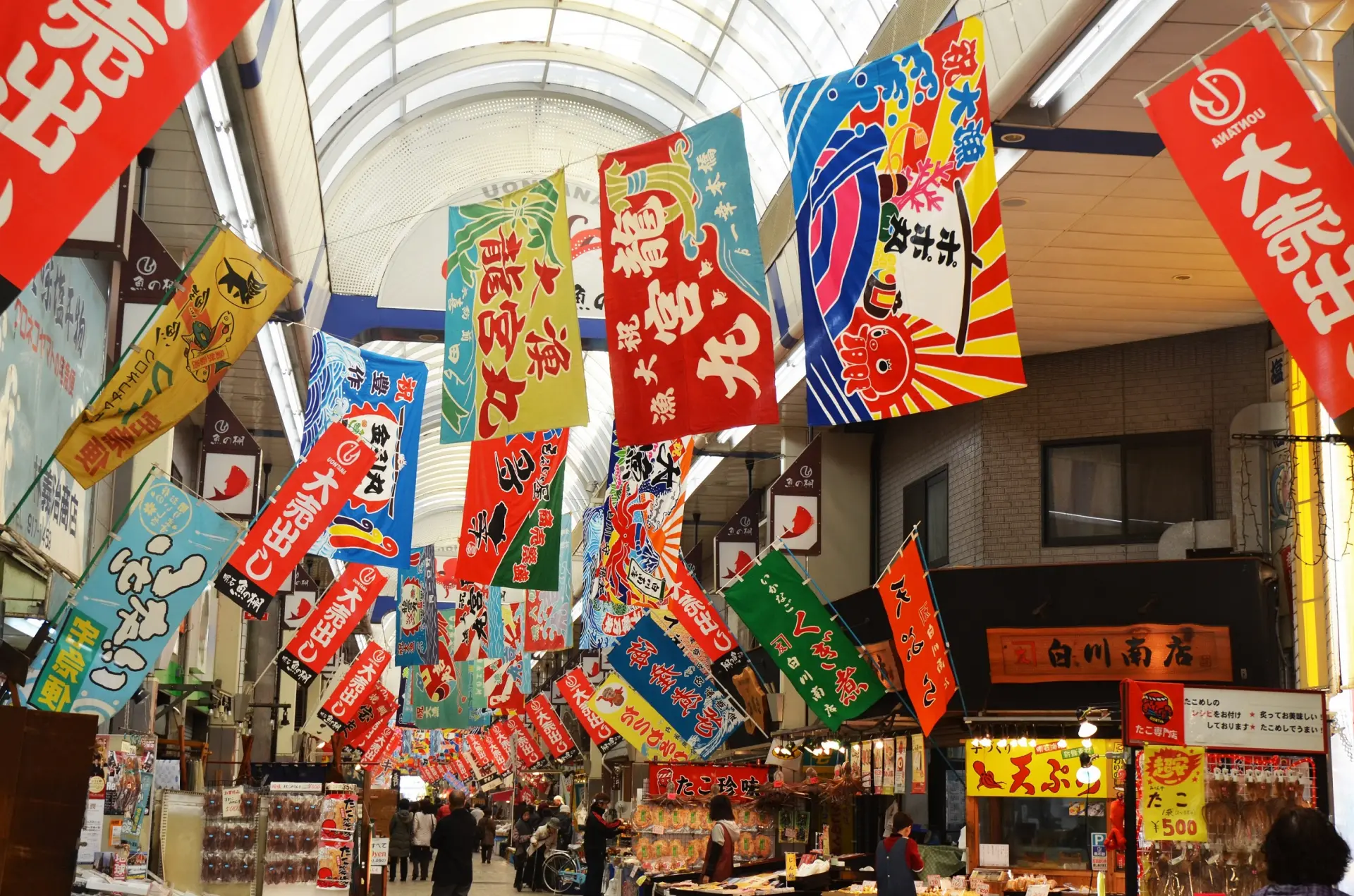
At the end of the year, Uonotana Shopping Street is decorated with large fishing flags and bustling with shoppers.
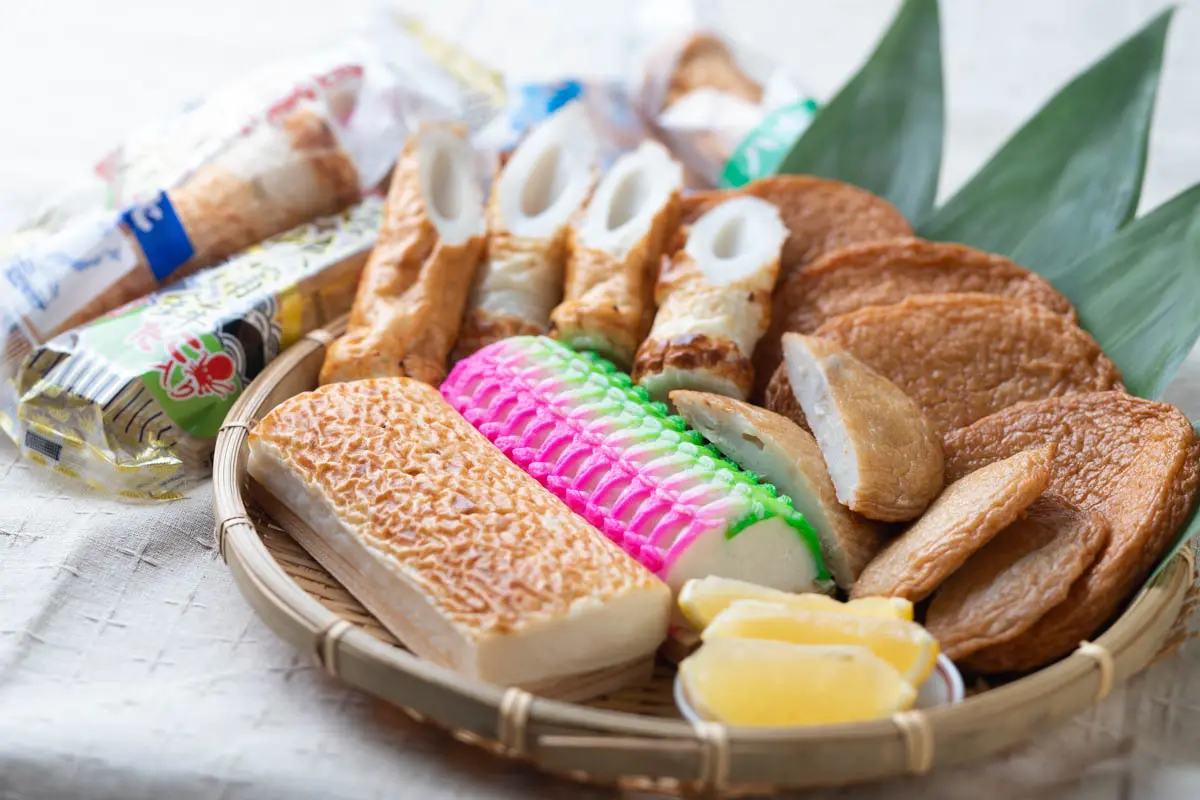
Kamaboko, chikuwa, tempura, and other fish paste products are also local specialties of Uonotana Shopping Street.
After lunch, we strolled through Uonotana Shopping Street, a historic market said to have been established around the time of Akashi Castle’s construction, nearly 400 years ago. The 350-meter arcade is lined with about 100 shops, including seafood vendors selling the freshest catch from the morning’s haul, stores specializing in fish cakes and processed marine products, and eateries serving Akashiyaki and other local delicacies. The vibrant atmosphere and the array of unique goods on display made for an engaging experience, making it impossible not to shop and sample street food. Many of the store owners were friendly and welcoming, happily answering our questions about unfamiliar products. The warmth of the interactions made us feel like we had truly become a part of the town, deepening our appreciation for Akashi’s food culture.
Basic Information
- Name in Japanese
- 明石の鮨クーポン「技の逸品」
- URL
- URL
Basic Information
- Name in Japanese
- 魚の棚商店街
- Name
- Uonotana Shopping Street
- Address
- Honmachi 1, Akashi City, Hyogo 673-0892
- Phone
- 080-4647-9666 (Uonotana Shopping Street Office)
- Access
- 3-minute walk from JR/Sanyo Electric Railway "Akashi" Station
- Hours
- Varies by store
- Closed
- Varies by store (Many shops closed on Thursdays)
- URL
- URL
15:15 – Strolling Through Akashi Park, Home to 400 Years of Castle History
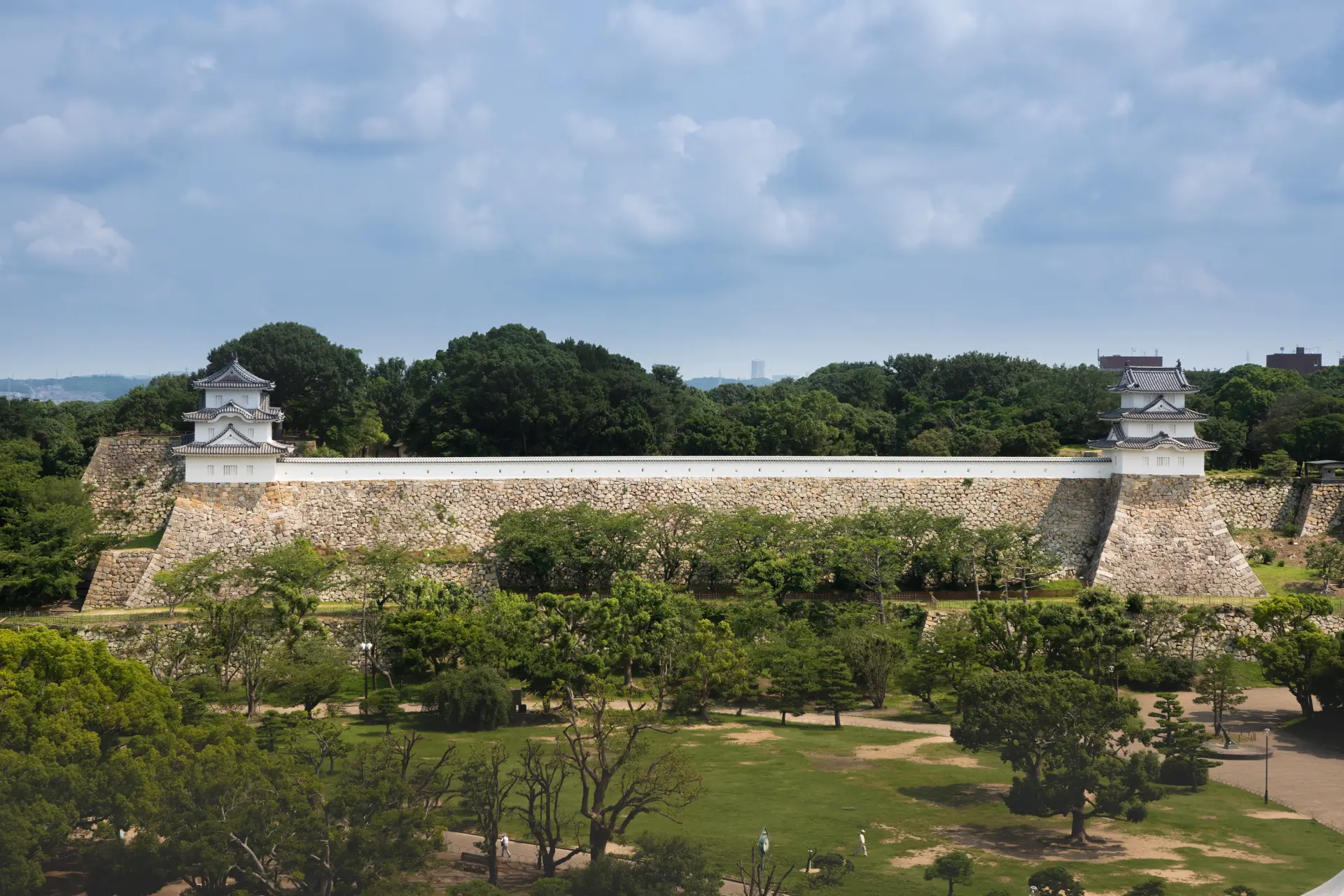
A grand view of the impressive stone walls and three-tiered turrets, visible even from the JR Akashi Station platform.
After indulging in Akashi’s culinary offerings and enjoying the lively atmosphere of Uonotana Shopping Street, we decided to end our journey with a walk through Akashi Park.
Located just north of Akashi Station, Akashi Park is a spacious recreational area set within the ruins of Akashi Castle. The park is home to various sports facilities and open spaces where families and children can be seen playing and relaxing amidst lush greenery.
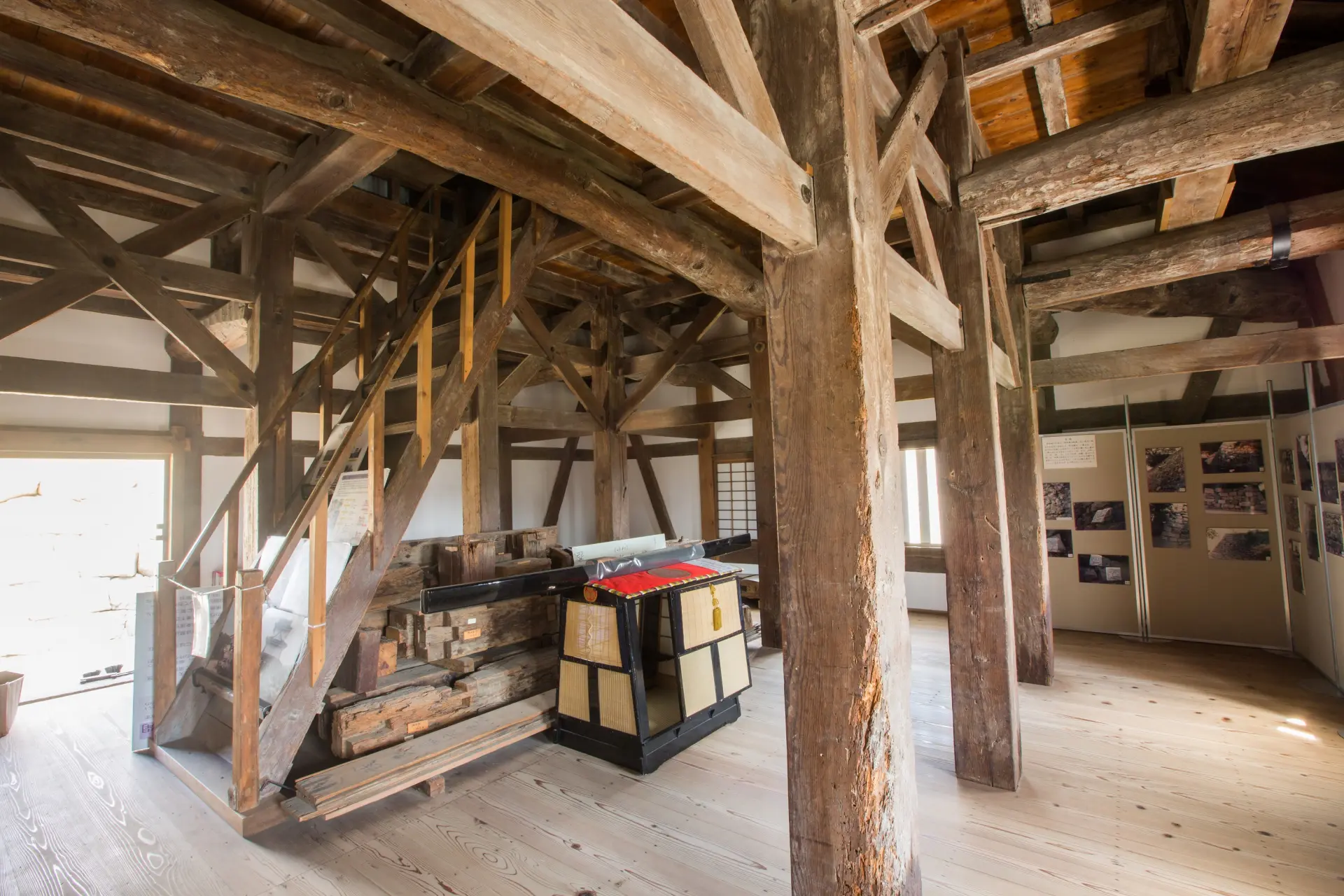
The turrets, designated as Important Cultural Properties of Japan, are open to the public for a limited time.
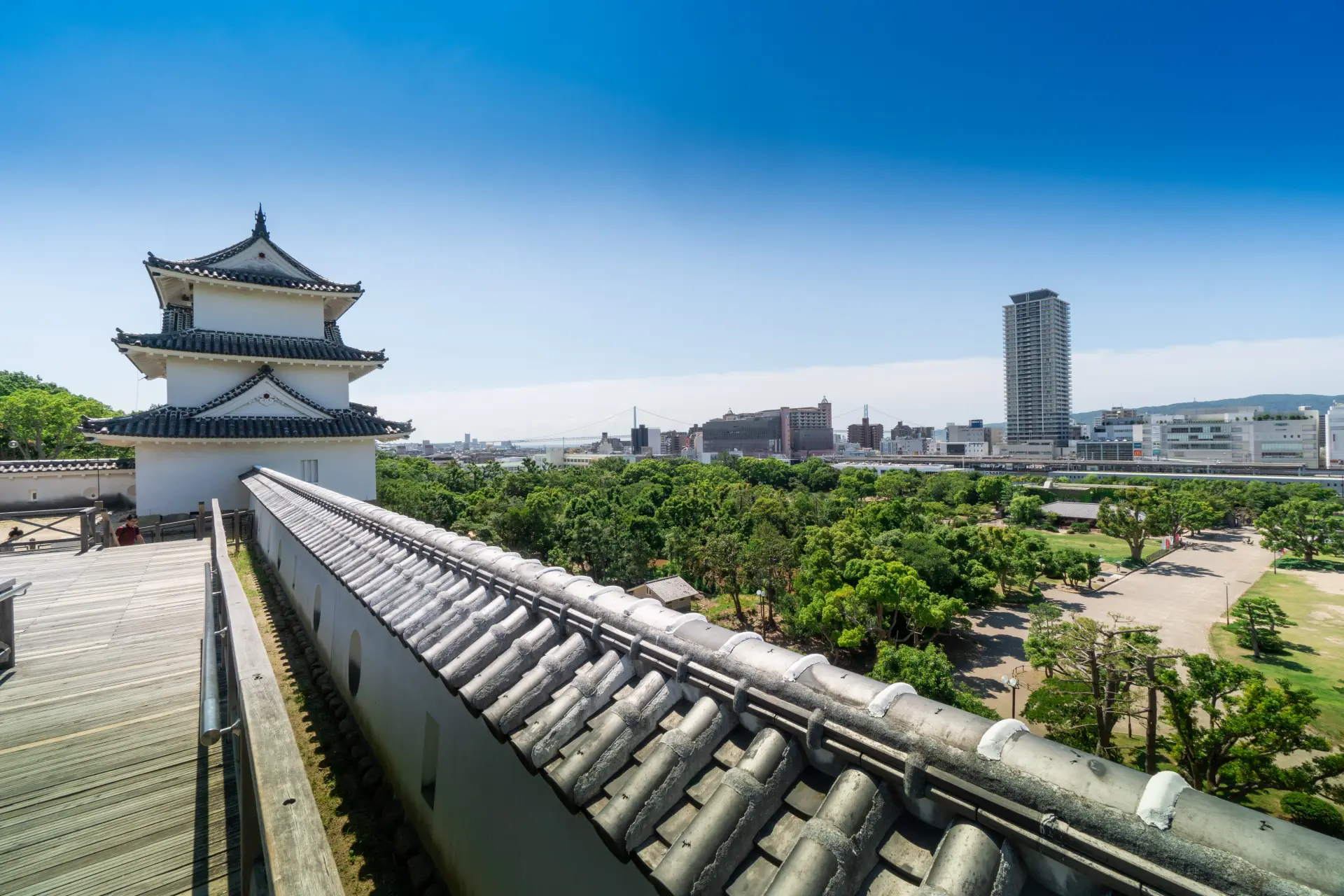
From the observation deck at the Honmaru site, visitors can enjoy a panoramic view, with the Akashi-Kaikyo Bridge stretching across the horizon.
As we continued, we reached the main enclosure of Akashi Castle, surrounded by towering stone walls. Built in 1619 at the beginning of the Edo period, Akashi Castle has stood for over 400 years and is recognized as one of Japan’s "Top 100 Castles." While the castle itself no longer has a main keep, two original three-story turrets remain intact on the southern stone walls. These structures are among only twelve surviving three-story turrets in Japan and are designated as Important Cultural Properties. From March to May and September to November, the turrets are open to the public on weekends and holidays, offering a rare glimpse into the craftsmanship of Edo-period castle architecture. Exploring the interior of the turrets for the first time was a fascinating experience, as their intricate wooden construction and design details evoked a strong sense of historical romance.
Basic Information
- Name in Japanese
- 明石城・兵庫県立明石公園
- Address
- 1-27 Akashi Park, Akashi City, Hyogo 643-0847
- Phone
- 078-912-7600 (Hyogo Prefectural Gardening & Park Association)
- Access
- 5-minute walk from JR/Sanyo Electric Railway "Akashi" Station
- Hours
- Open year-round (*Turret interiors open from March to May & September to November on weekends & holidays, 10:00–16:00)
- Admission
- Free
- Closed
- Open year-round
- URL
- URL
Wrap-up
This journey through Hyogo was a celebration of sake, offering countless opportunities to enjoy local drinks and cuisine. One of the most striking discoveries was how sake and food vary by region, each reflecting its local culture. The rich stories behind these pairings made the experience even more memorable, leaving us eager to explore more places in search of great sake and food.
Check also...
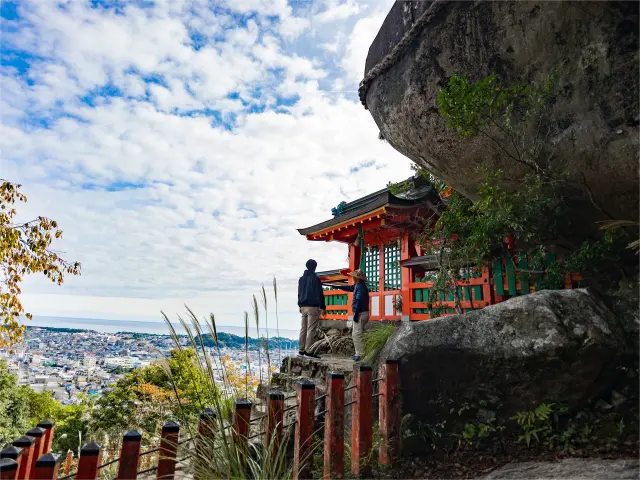
Wakayama: A World Heritage Site and Journey of Deep Mystique at the Kumano Kodo
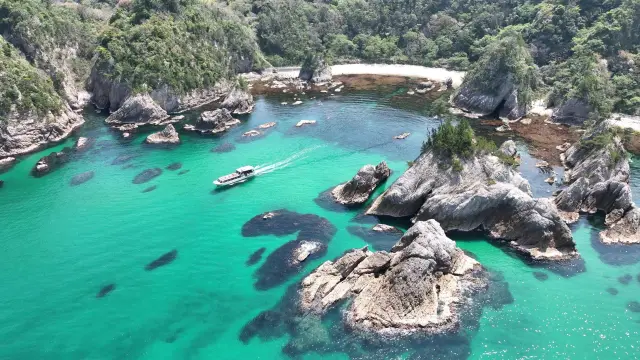
Tottori: A Journey to Unwind in the Majesty of Nature at San’in Kaigan Geopark
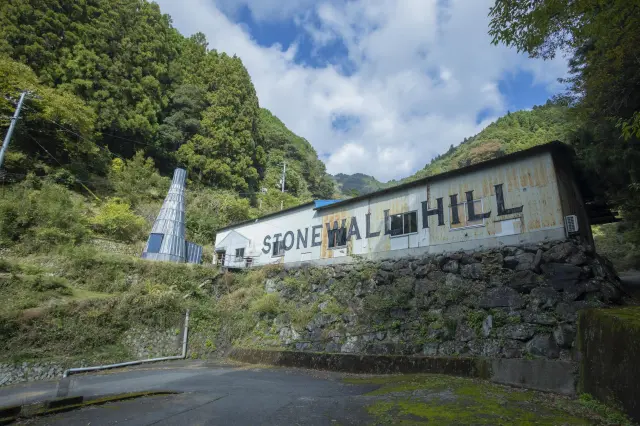
Tokushima: A Journey into Slow Living in the Mountains of Tokushima
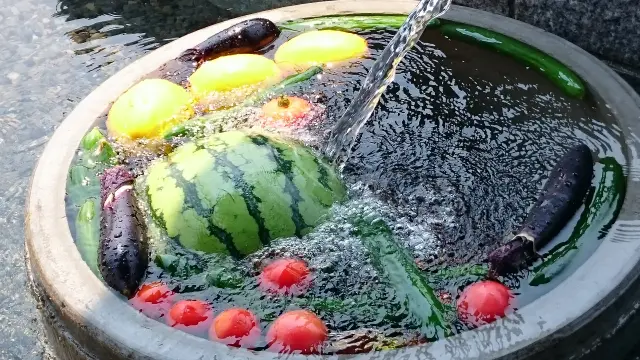
Shiga: Days Steeped in Nature and Blessed Waters Along Lake Biwa
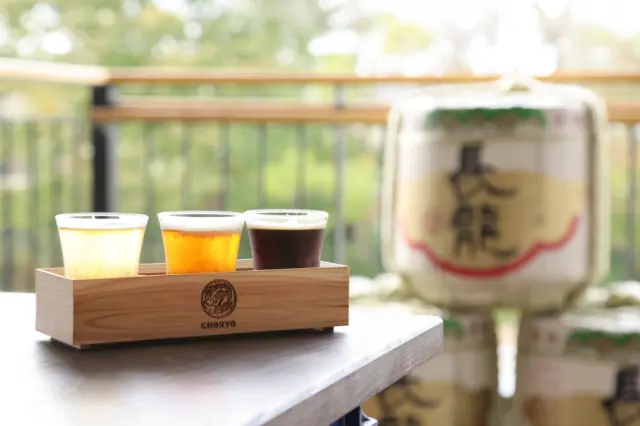
Nara: A Journey Through Its Ancient Fermentation Culture

Mie: A Journey to Experience the "Ama Culture" Living Along the Beautiful Ise-Shima Sea
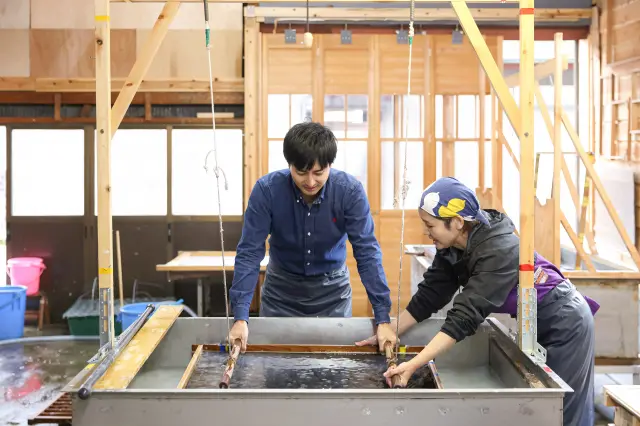
Fukui: A Journey to Experience Japan’s World-Class Craftsmanship
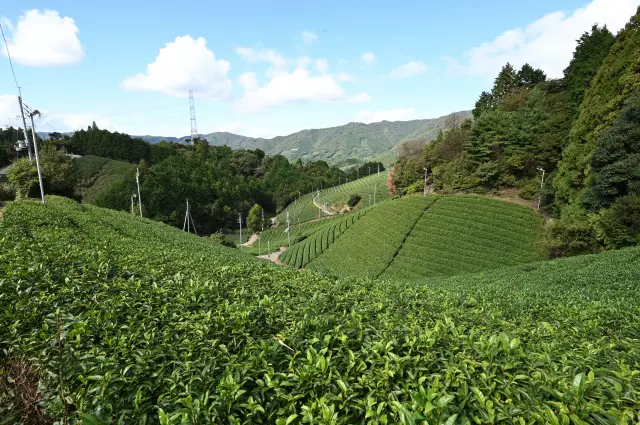
Kyoto: A Journey Through Japanese Gastronomy
